Have you ever flipped through the pages (and pages) of the menu at the Cheesecake Factory? Each turn of the page offers more options and counter options to befuddle your appetite. That also resembles the menu at virtually every restaurant we have experienced in Bulgaria. The menu offerings are consistent, and the menus are consistently long. But the wide-ranging selection of food reflects the long history and diverse people groups that have called this area home. Bulgarian food reflects the influences of the neighbors (Balkan, Greek, Turkish), along with a number of local specialties.
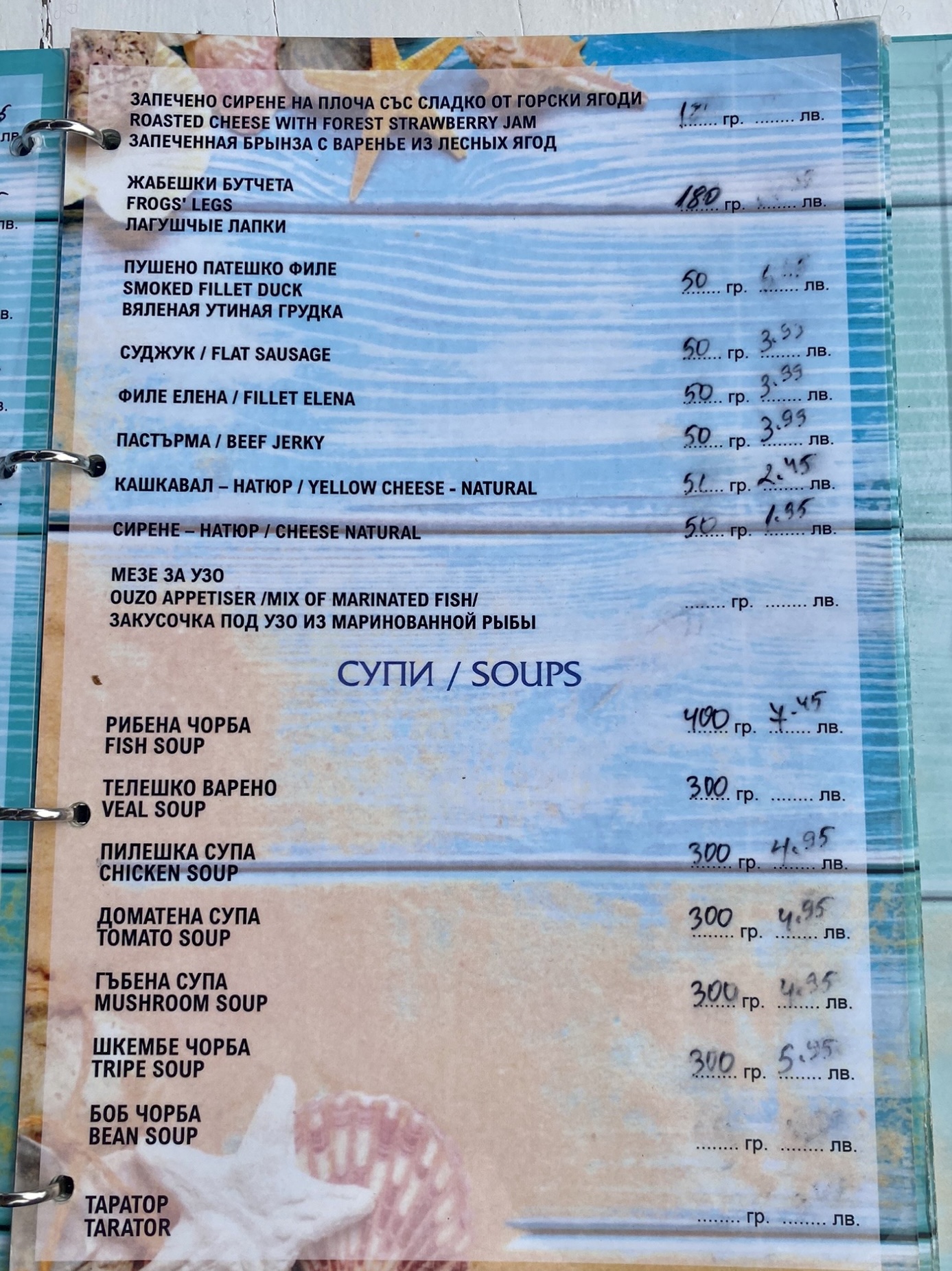
A Bulgarian restaurant may state that it is a steakhouse, a BBQ restaurant, a seafood restaurant, or a pizza parlor. But the menu will be the length of a small book, sometimes with illustrations like a children’s book, and sometimes just a long tome of text. When there are translations, we have used them like the Rosetta Stone as we have waited to order. And we never feel that we are entitled to English translations, but it is funny when the menu is 12 pages of Bulgarian text without any pictures or translations or pad that page count!
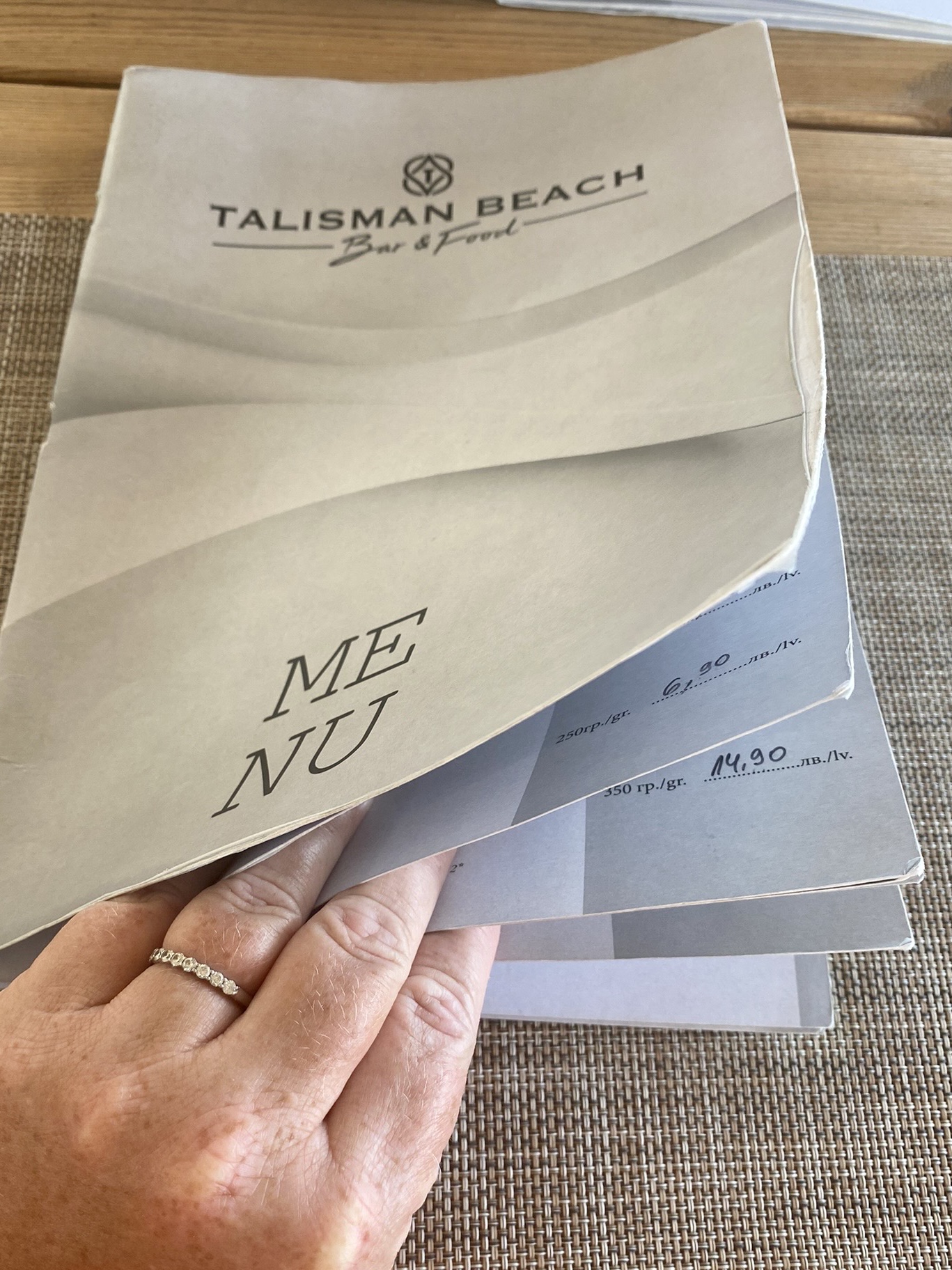
Here is how the menu breaks down:
Salads: It is customary to start a Bulgarian meal with a salad (and the local brandy called rakia). Every restaurant serves a shopska salad, the national salad of Bulgaria. It is tomatoes, cucumbers, onions/scallions, peppers, parsley, covered in shreds of their white brine cheese known as sirene (and often garnished with olives). The shopska is consistently fresh and is quite good!
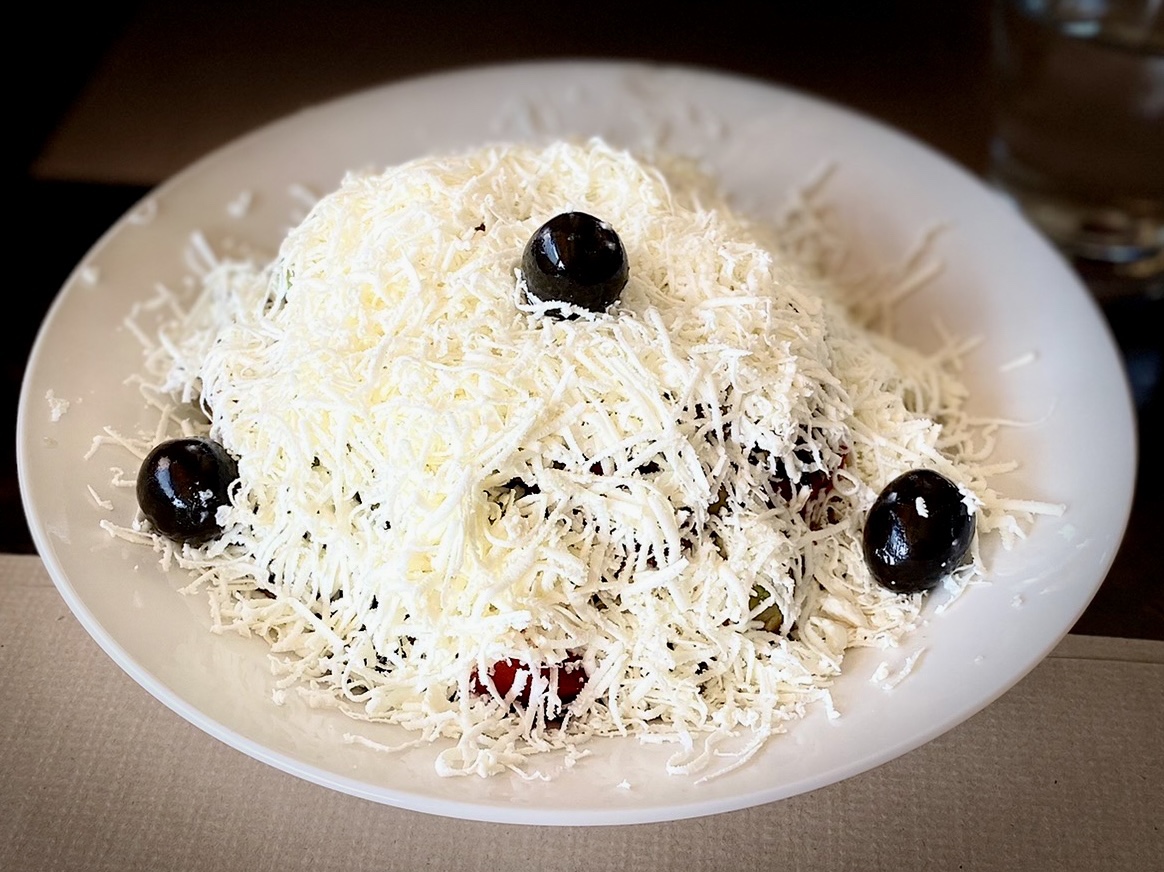
We often saw Greek salads, which also start with cucumbers and tomatoes, but with a finer chop and different cheese (herbed feta) and herbs. In addition there will be other combinations with roasted peppers, grilled zucchini, eggplant (sliced or mashed), green salads, and maybe a caesar or caprese. Then often salads with seafood, or a salad of cold mussels. An absolute abundance of outstanding salad selections!
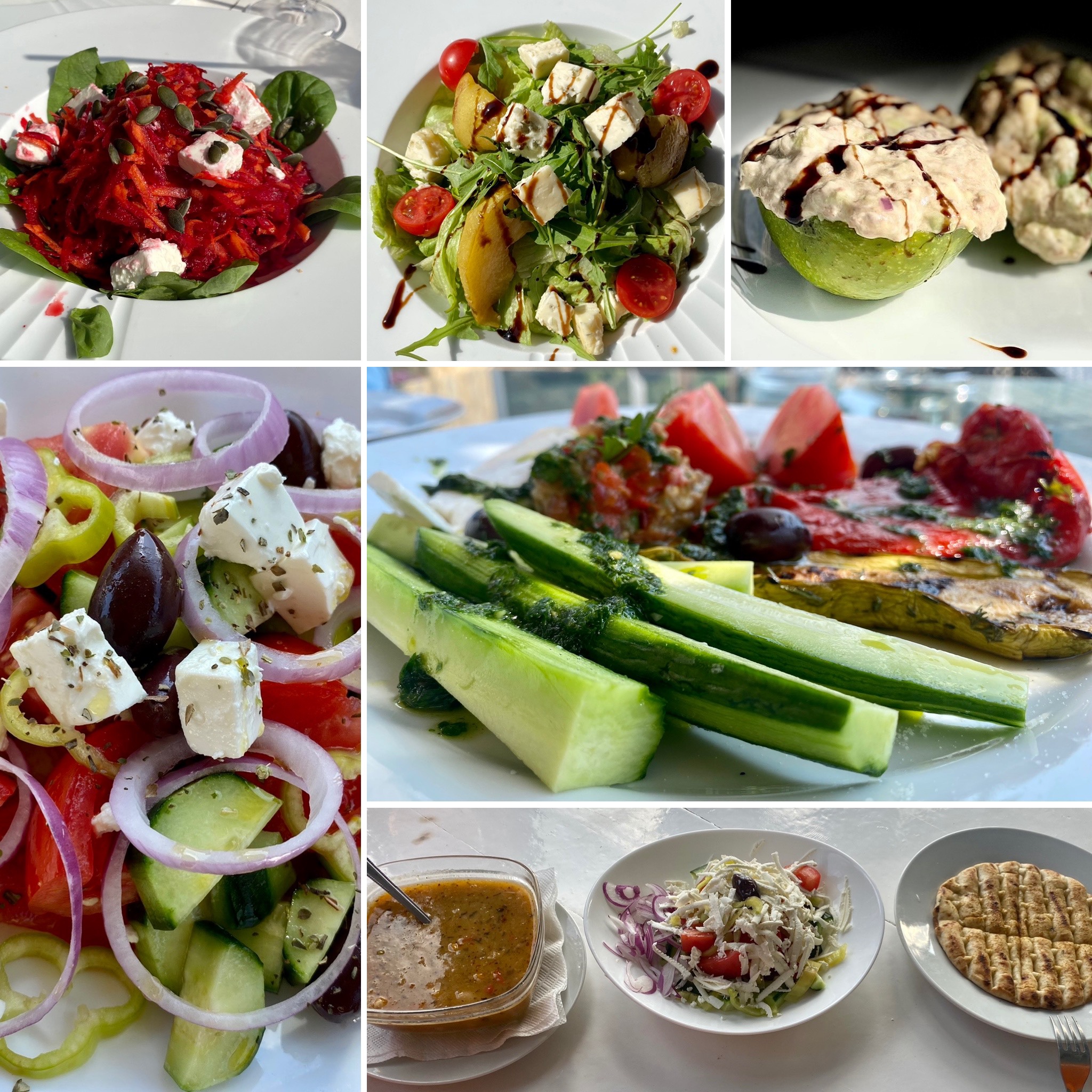
Soups: Somewhere between two and six varieties, usually on the higher side of that range. Fish, tripe, chicken, tarator (a cold cucumber soup), tomato, veal or beef (or both). Not all of these are always available. Sometimes at dinner they are out of soup, and sometimes at lunch they have not yet finished the soups for the day. Or it is just summertime and they figure that no one would be ordering hot soup!
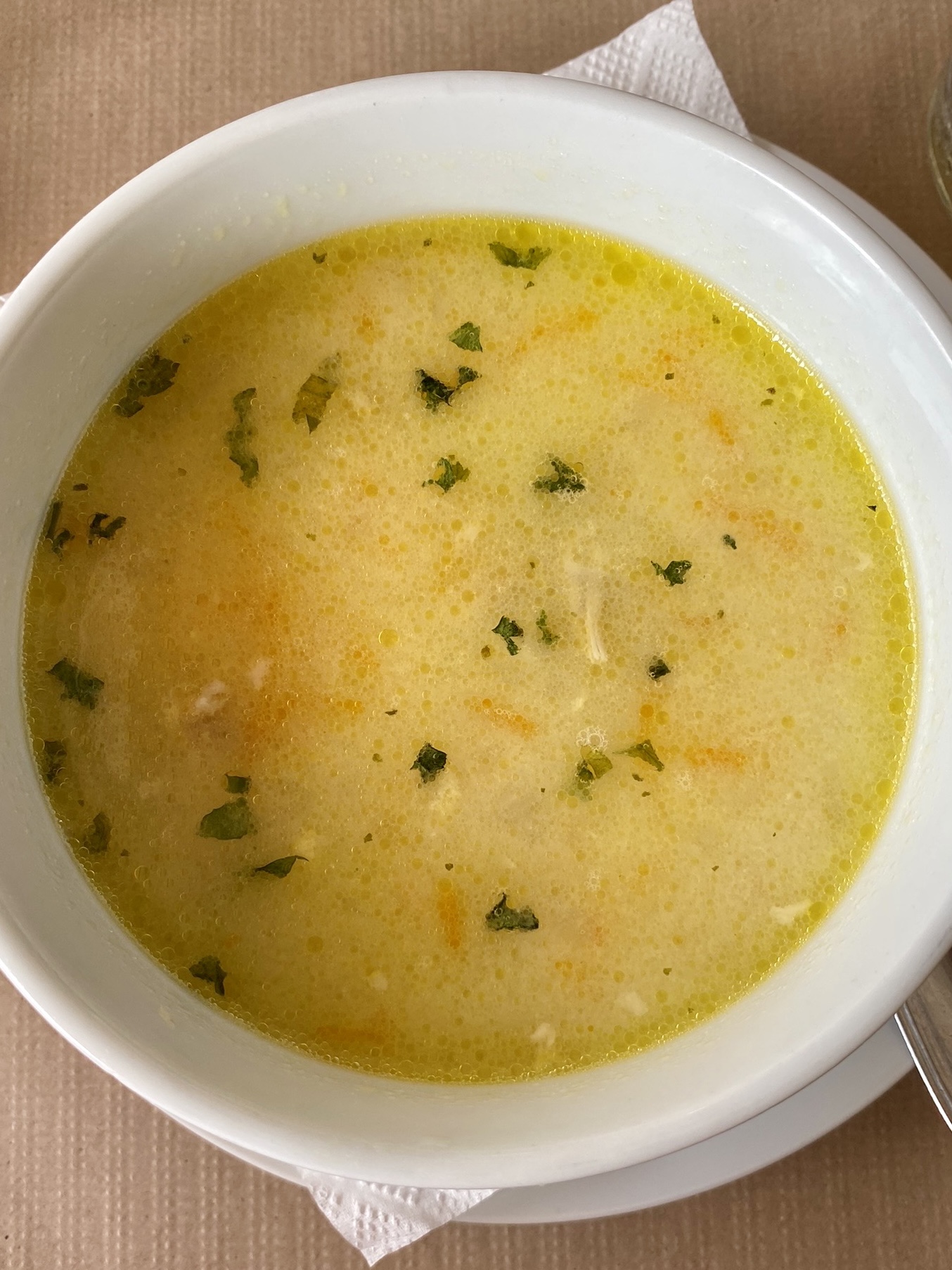
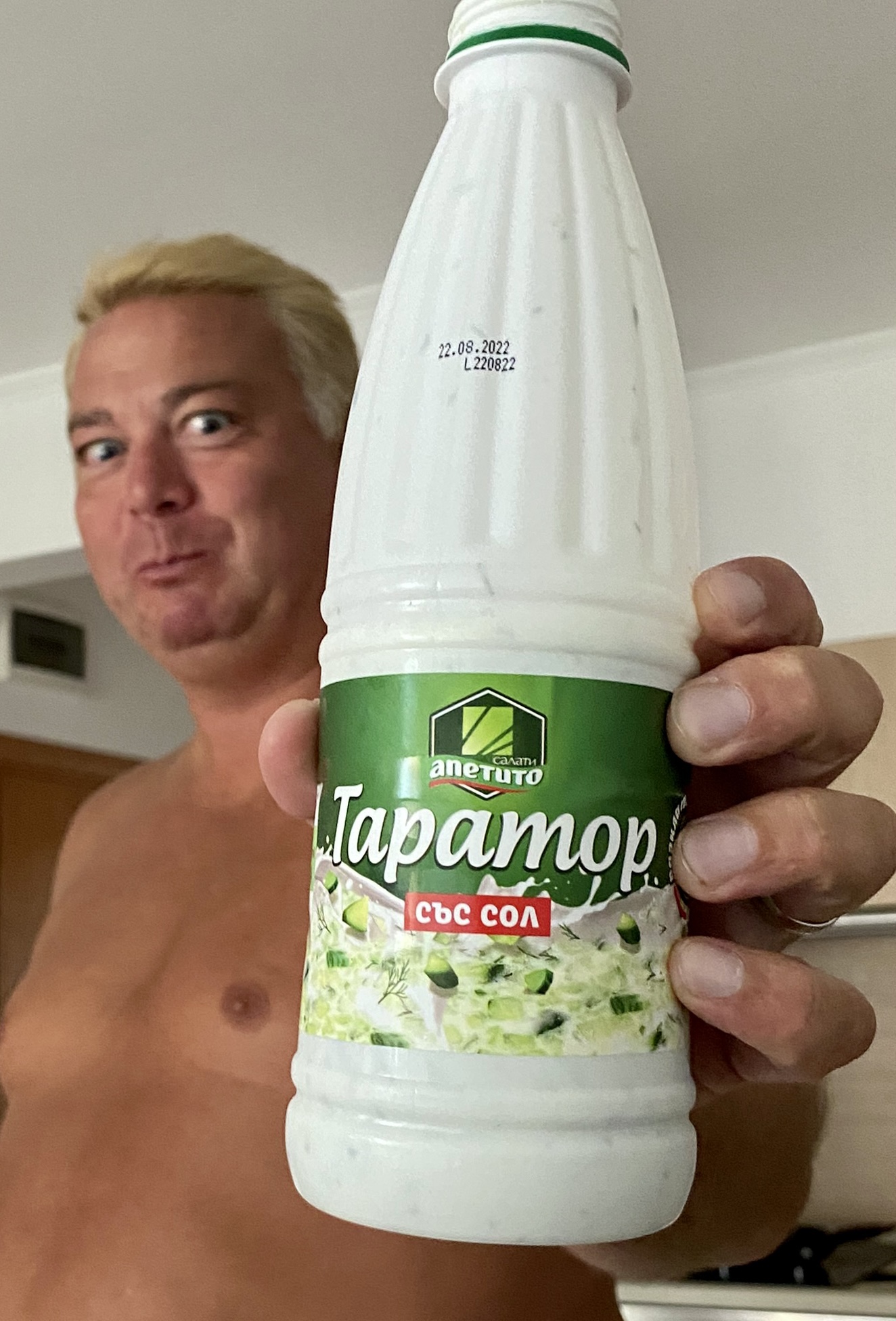
Appetizers: A variety of cold and hot appetizers. Cheeses, Bulgarian charcuterie, maybe a selection of nuts. Often dishes that seem like brunch, like the egg dish called “mish-mash,” creamy scrambled eggs with peppers, onions, and cheese. A server once laughed and said all Bulgarian food can be an appetizer.
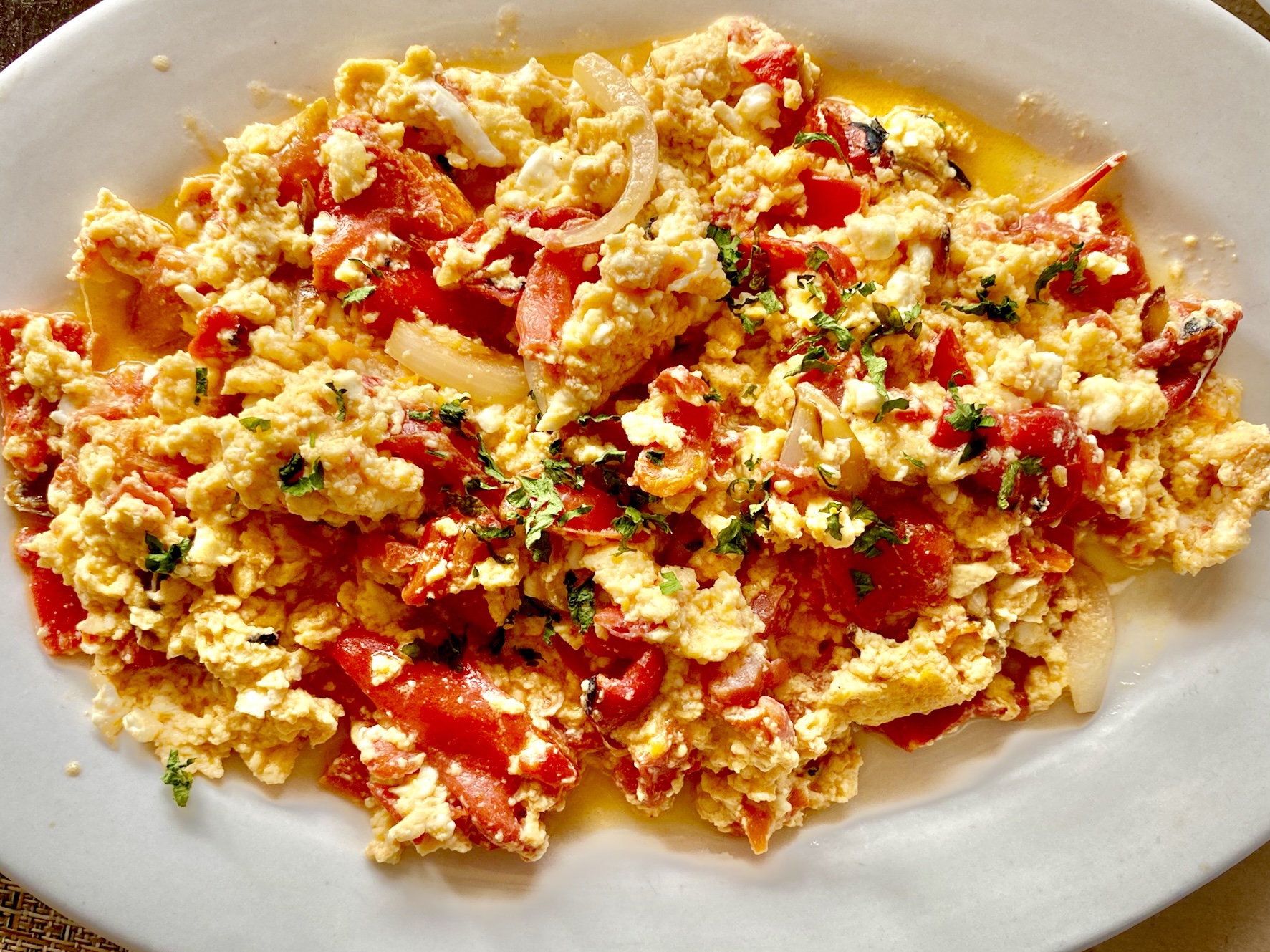
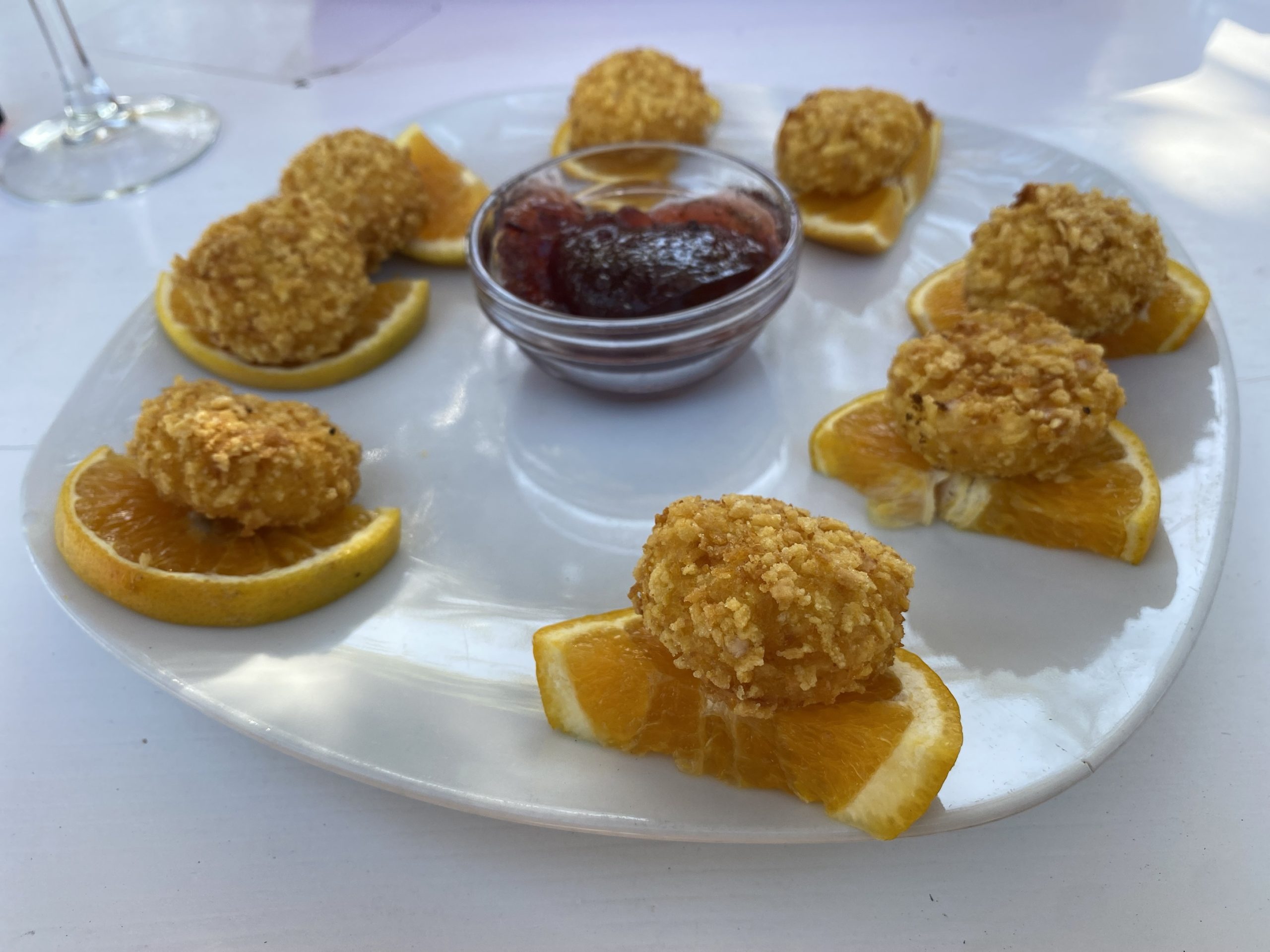
Seafoods: The Black Sea offers a bounty of good seafood selections. Octopus and squid, mussels, shrimp. Sometimes whelks or cockles, but the only oysters we saw were imported. Finfish almost always include sea bass and sea bream, and sometimes mackerel, trout, turbot, bluefish, goby, shark, or many others. A sardine-like fish called sprats are deep-fried and served whole.

Meats: Then the menu goes into pages of grilled meats: chicken, pork, beef, and veal, with dozens of methods of preparation. Sometimes duck or veal. Writing this makes me smell the smoke rising off the grill, an aroma that always piques my appetite.
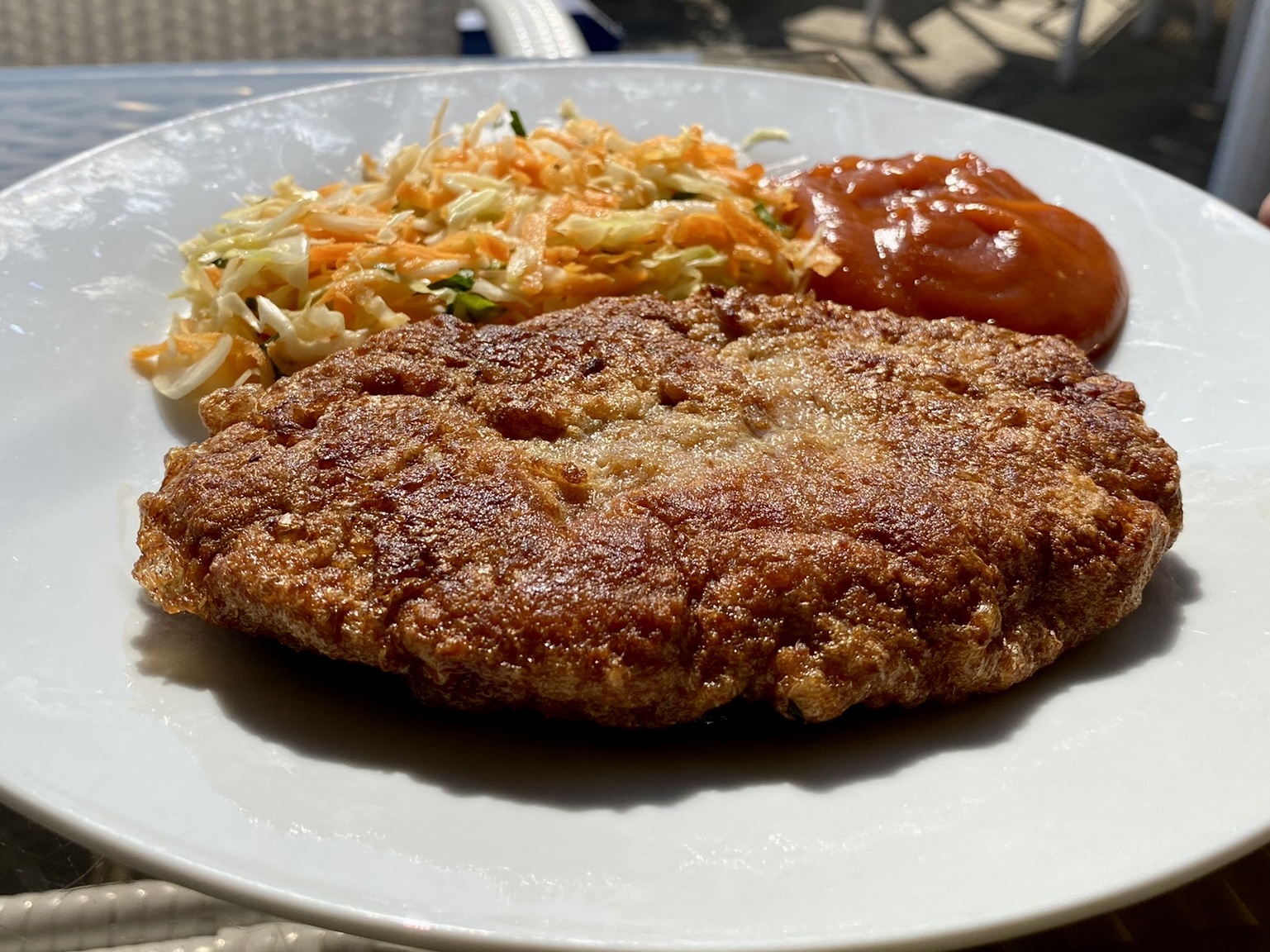
There are sausages, schnitzels, and skewers. Chicken or pork kavarma, cooked in a clay pot.
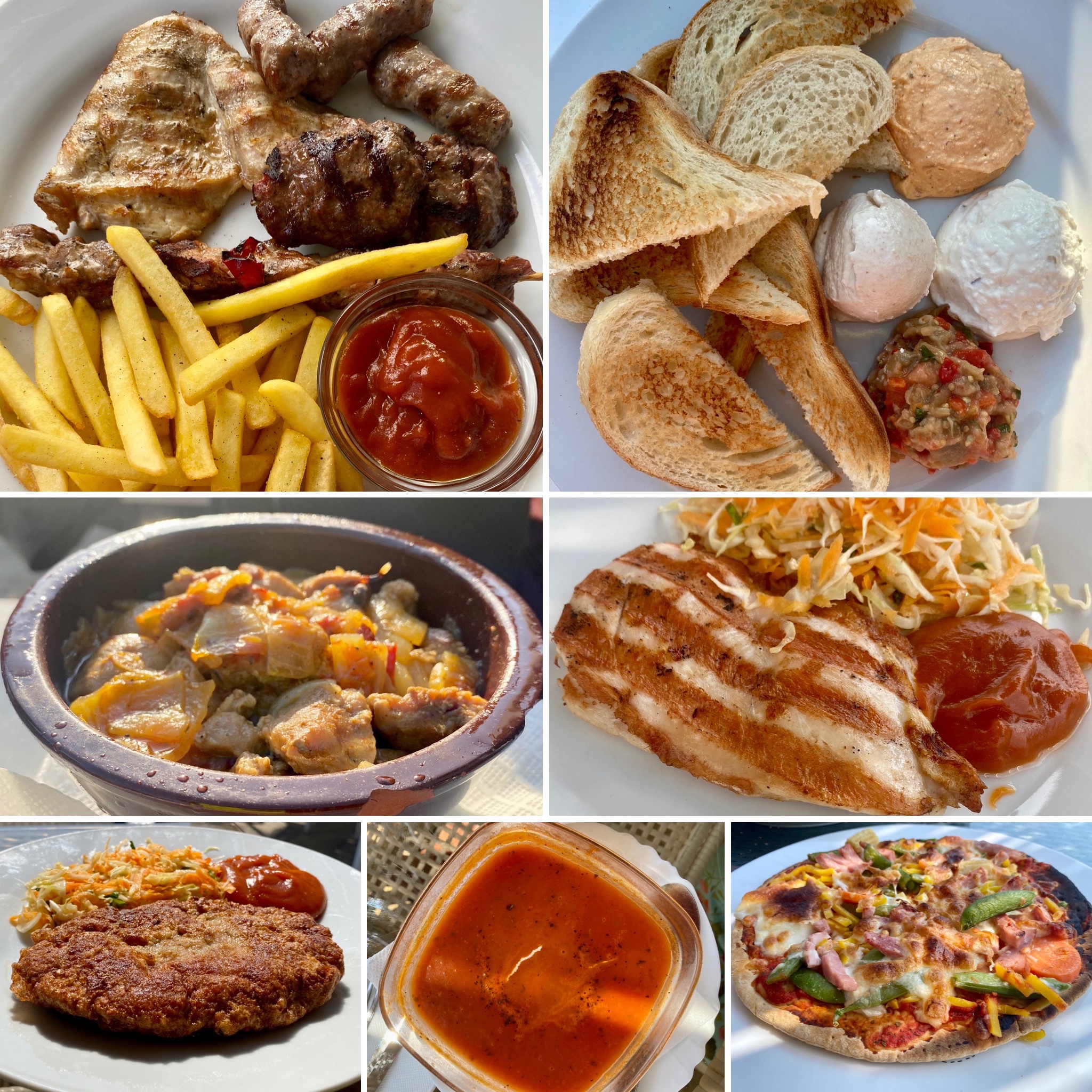
And a dish called sach is cooked in a larger clay cooking vessel, served open and sizzling which we likened to fajitas (often listed as “chicken on ceramic plate” or something of that nature).
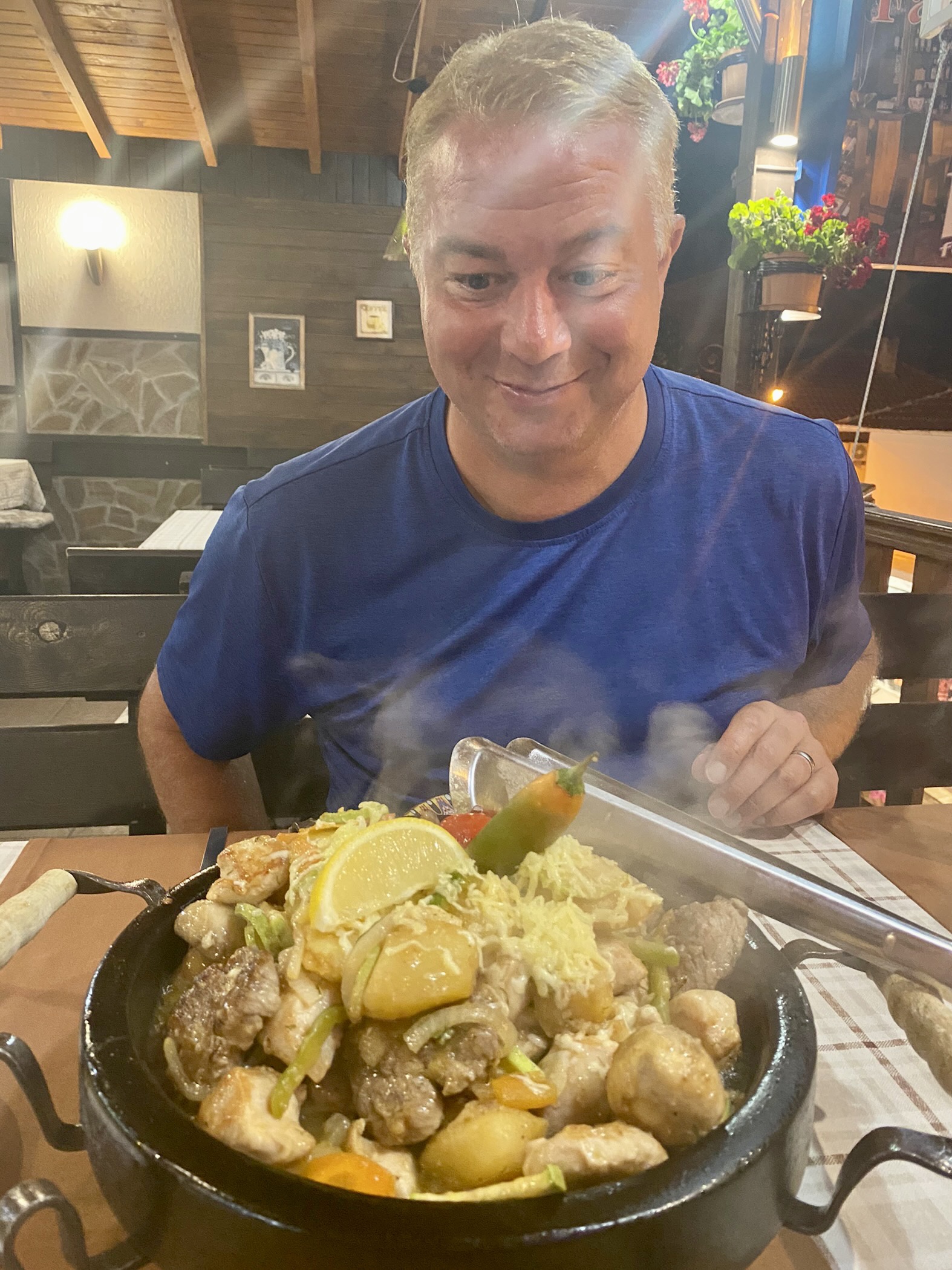
Pastas: Even if the restaurant is not pasta-focused, there will usually be a few pasta dishes. Unless these are hand-made, we found them to be regrettable to order.
Pizzas: Often these are simple flatbread offerings, although a pizza-focused restaurant will usually have a more substantial dough.
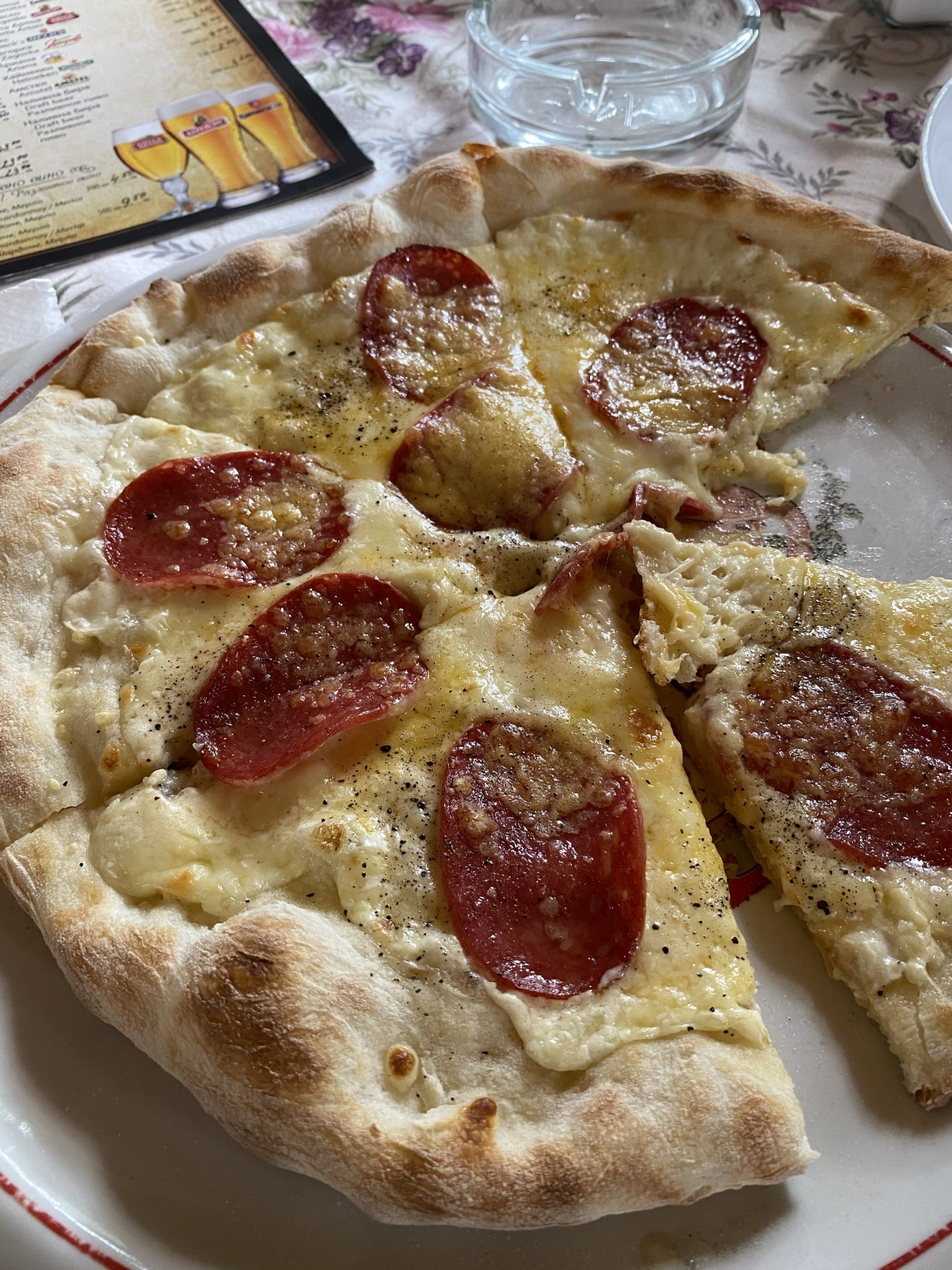
Often the pizza is “by choice” and you can pick anything off the menu to throw on the pie (“anything you want… not seafood… well, maybe tuna”). Other restaurants will have dozens of choices, even if they are not a pizza restaurant! We enjoyed pizzas that used Bulgarian charcuterie. Tammy made a point to order pizzas with pineapple since she has a strong feeling that won’t be an option when we get to Italy.
We also once ordered “pizza Mexico” on a whim, to see how it would compare with Taco Bell’s Mexican Pizza. The waiter brought it out and said “Surprise! There is corn! Baby corn!” It was cute. The pizza had peppers and other vegetables, and yes, had baby corn!
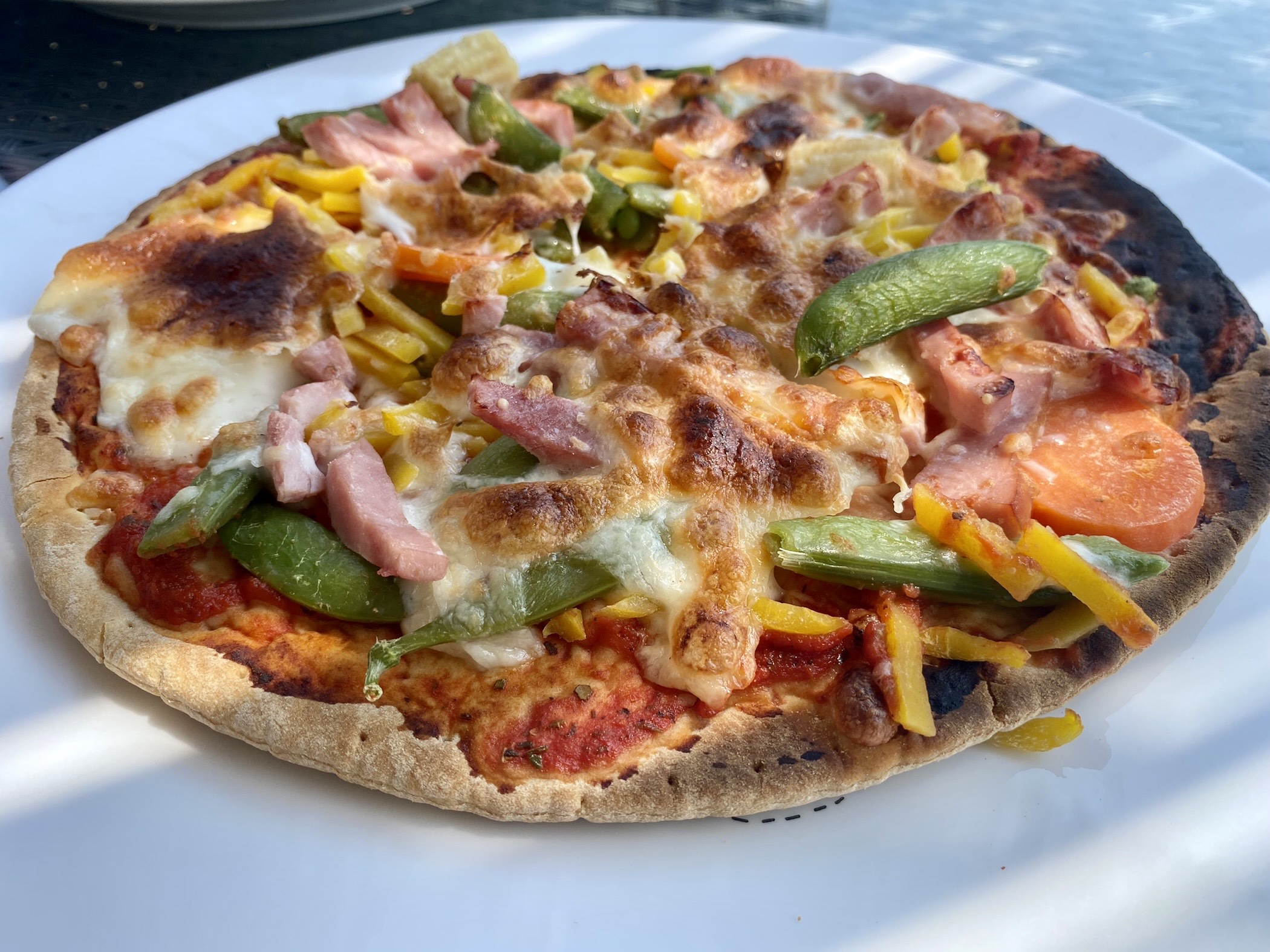
The main takeaway is that this is just about every restaurant! Seafood restaurants also have grilled meats, and meat grills also grill seafood. And then they all have salads, soups, and likely pizza and pasta sections on the menu.
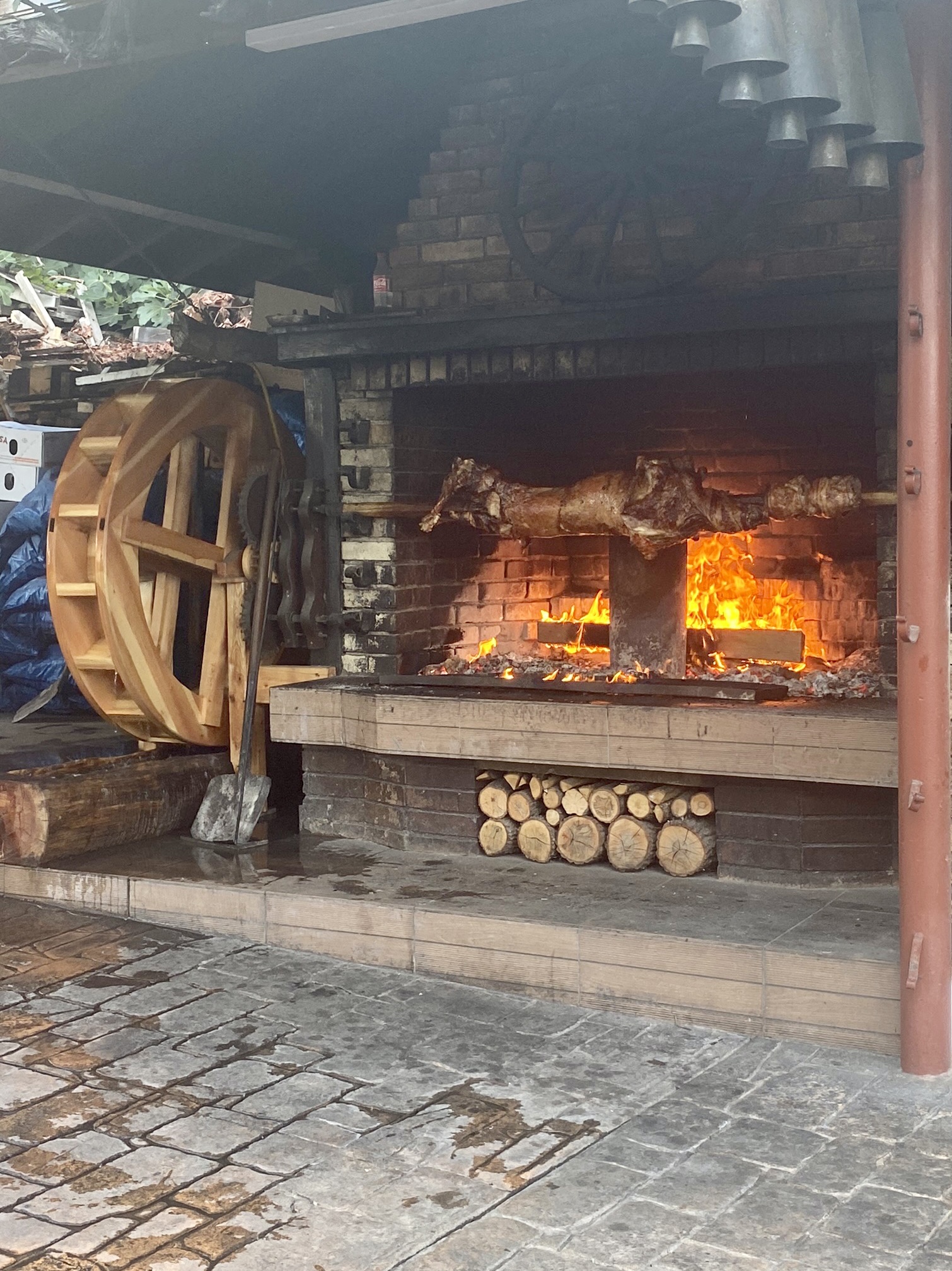
One of my usual red flags for a restaurant is if the menu is too long and ambitious. If we used that here, we would go hungry! We have tried asking waitstaff what the best items on the menu are, but typically the response is that everything is good, and then the follow up is to ask us what we are in the mood for. The goal seems to be to cater all things to all customers.
For us, once we started to understand how the menus worked, we started keying in on the items that may be different or special, versus the items that are on the menu perfunctorily. That led us toward some more interesting salads, and the main dishes that are what that restaurant’s kitchen is best at.
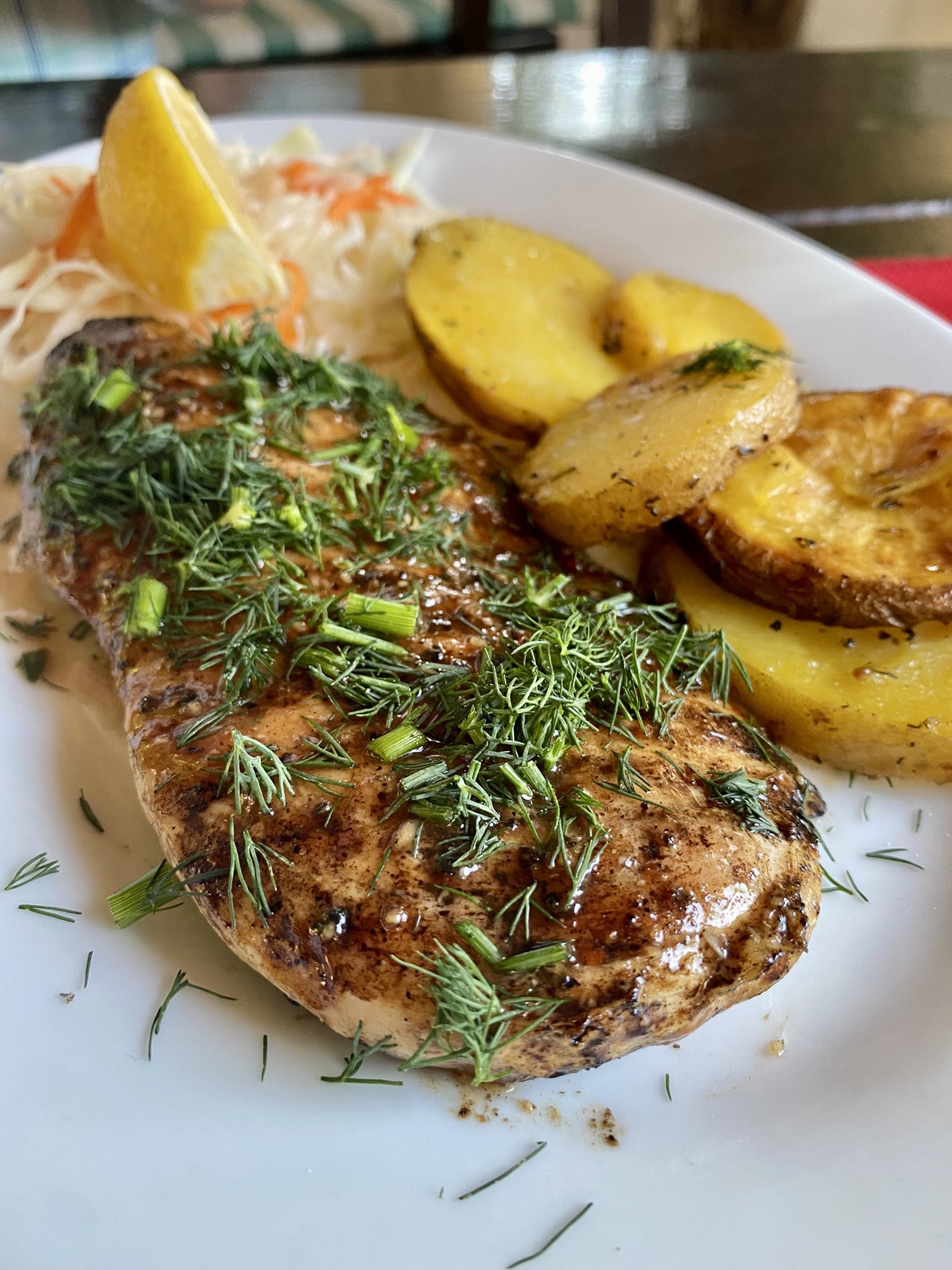
But no matter what, everything we experienced has been fresh! Even beach bars serve an outstanding shopska salad: we have not had a single mealy tomato in our time here.
Spices
Bulgarian food is generally not spicy with heat, but does involve copious amounts of herbs. The predominant flavor is summer savory, known as chubritsa.
Bulgaria has an “all purpose” condiment called sharena sol, or colorful salt. It is composed of savory, paprika, and salt, often with some other herbs added.
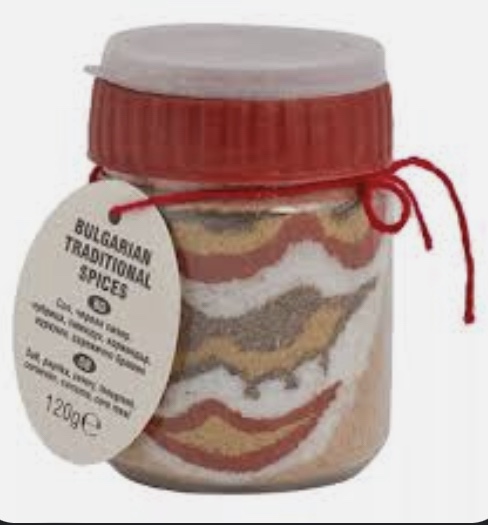
The Bulgarians also sell a variety of herbal teas, with the use of both medicinal herbs (like sideritis, or mountain tea) and culinary herbs (like peppermint or lemon thyme). We have found the food to be quite flavorful with the variety of herbs, but overall lacking kick. When we cook for ourselves, we are using hot sauces or peppers (including the Bulgarian carrot pepper) to add some piquancy to the existing spice blends that we have picked up.
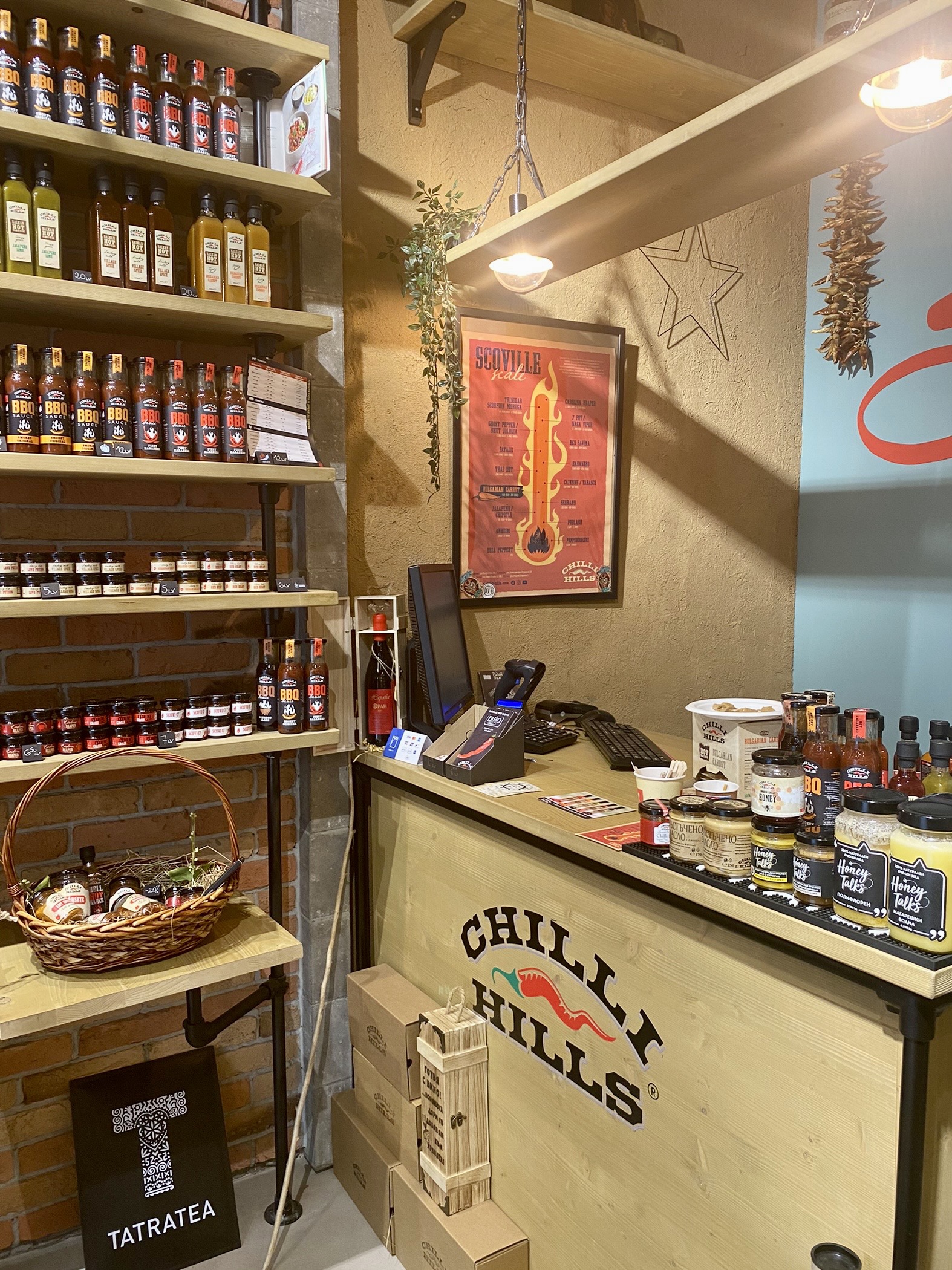
Cheese
Bulgarian cheese is generally divided into white brined cheese (sirene, similar to feta) or yellow cheddared cheese (kashkaval). The white cheeses are excellent, but the yellow cheeses are overly mild and good mostly for melting. Generally, the other cheeses we have had (cream, blue, and whatever came with a caprese salad) have had a consistency of a processed cheese food.
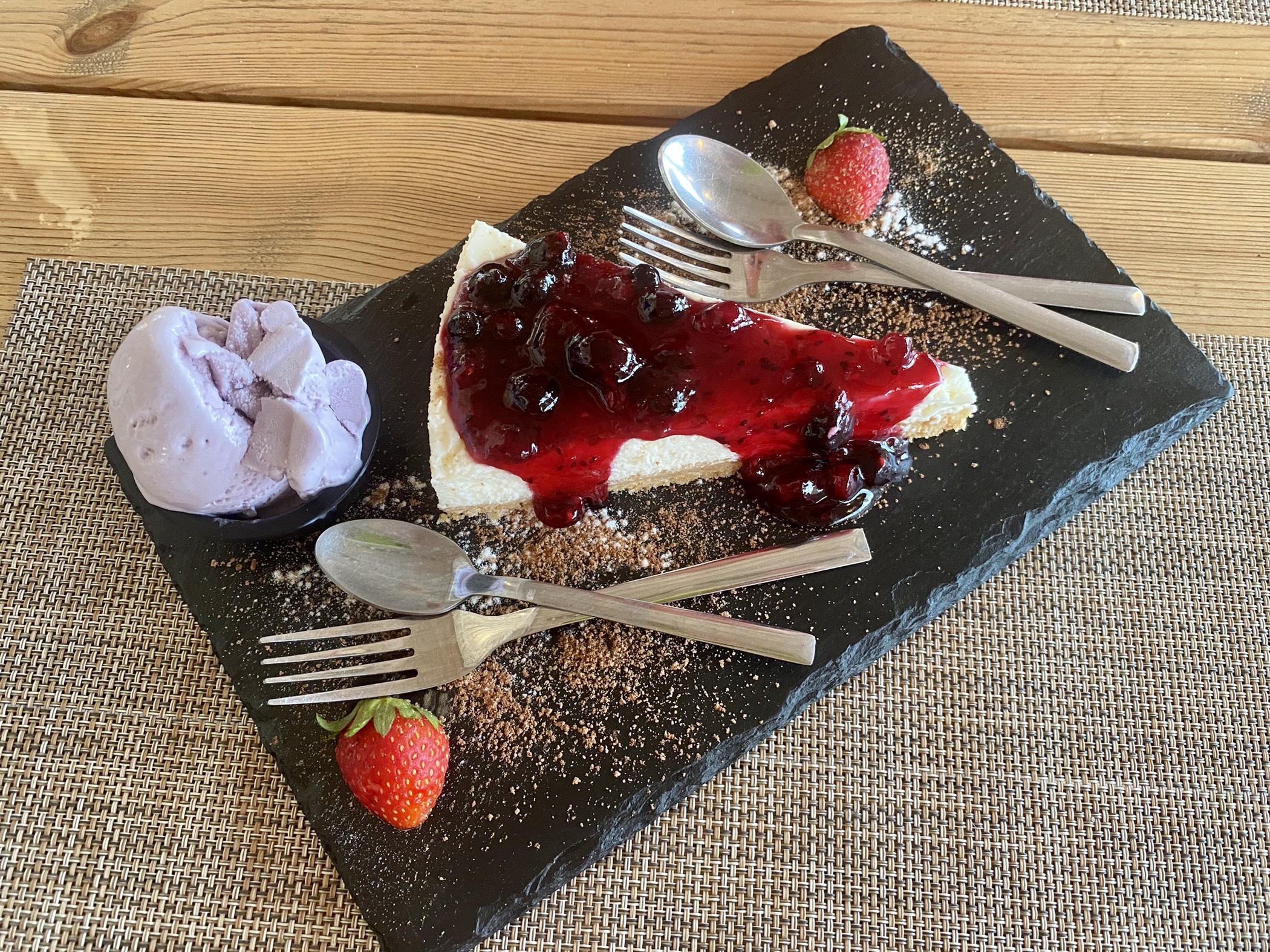
Think of cheesecake as a subset of the white cheeses: also excellent. The crust tends to be made from crushed biscuits and the cake is rich and favorably sour. Tammy has been on a quest to discover the best cheesecake in Bulgaria! It’s been a delicious game.
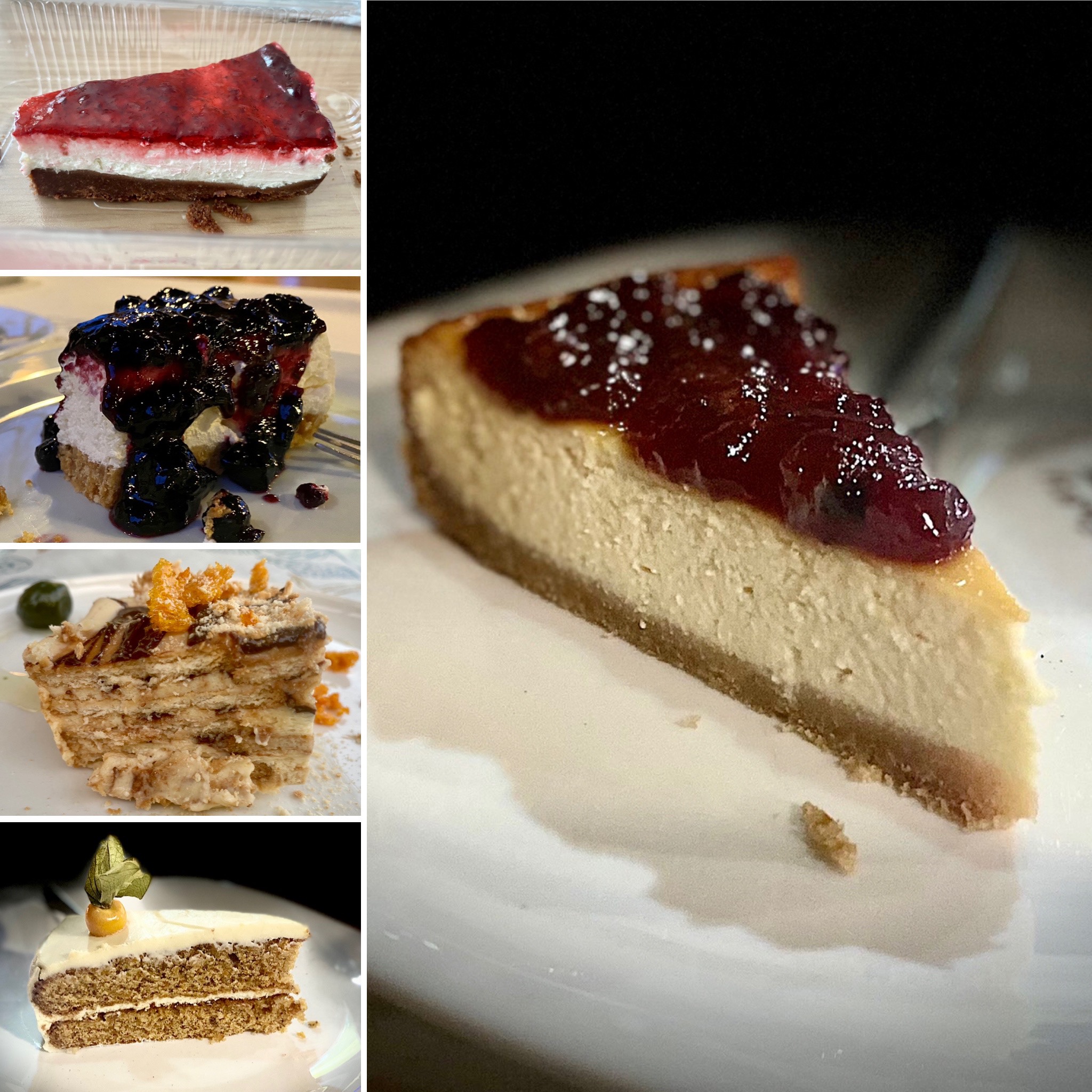
Bakeries are common, and serve a variety of banitzas and bureks: bread items of various shapes and fillings (white and/or yellow cheese, ham or minced meat, spinach). Each of these pieces cost between the equivalent of 70 cents and $2.
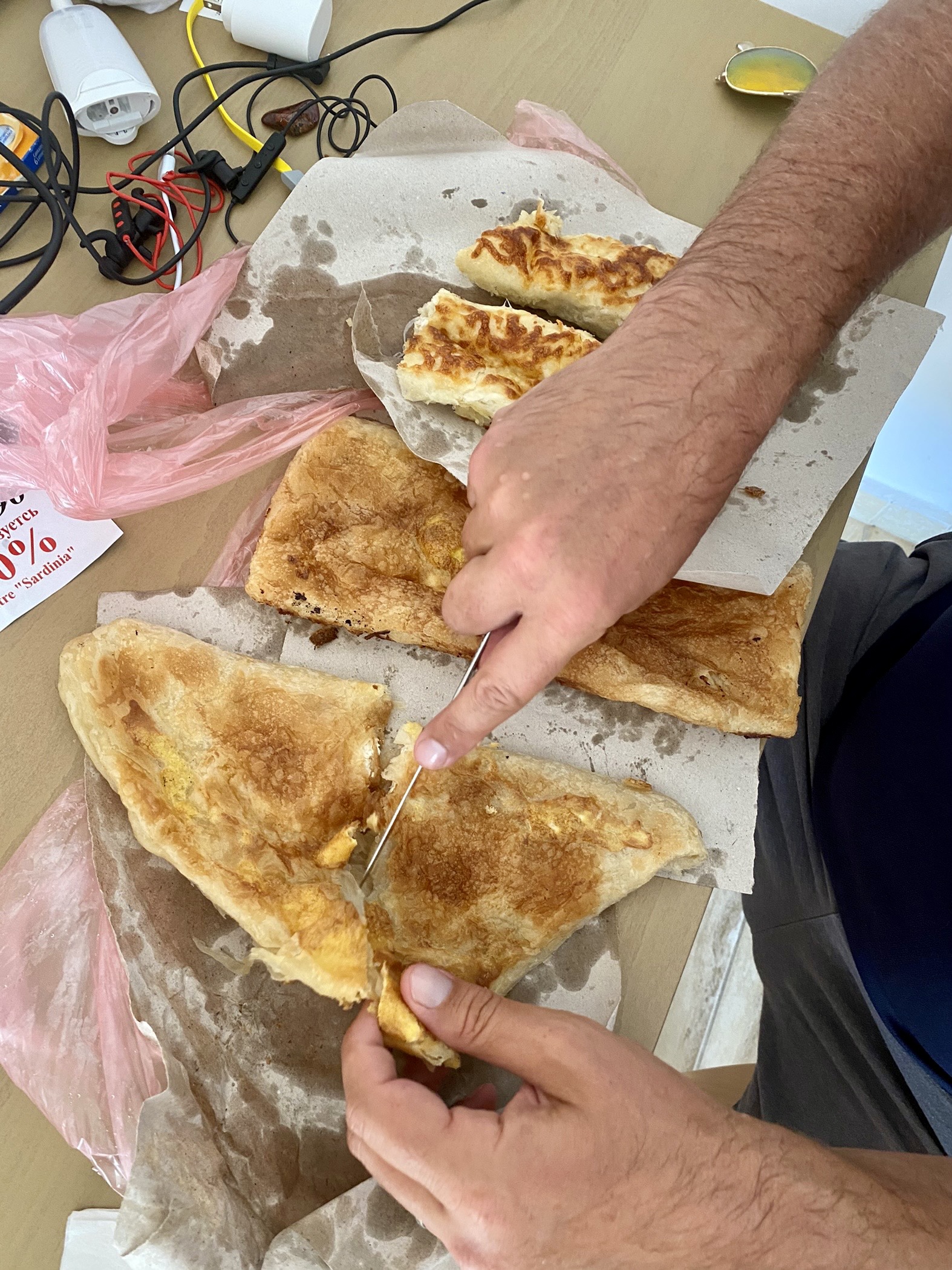
One of the dilemmas we’ve encountered has been deciding between selecting the same delicious item or trying a new one. We also play “fresh roulette” and select whatever was just added to the display hot from the oven!
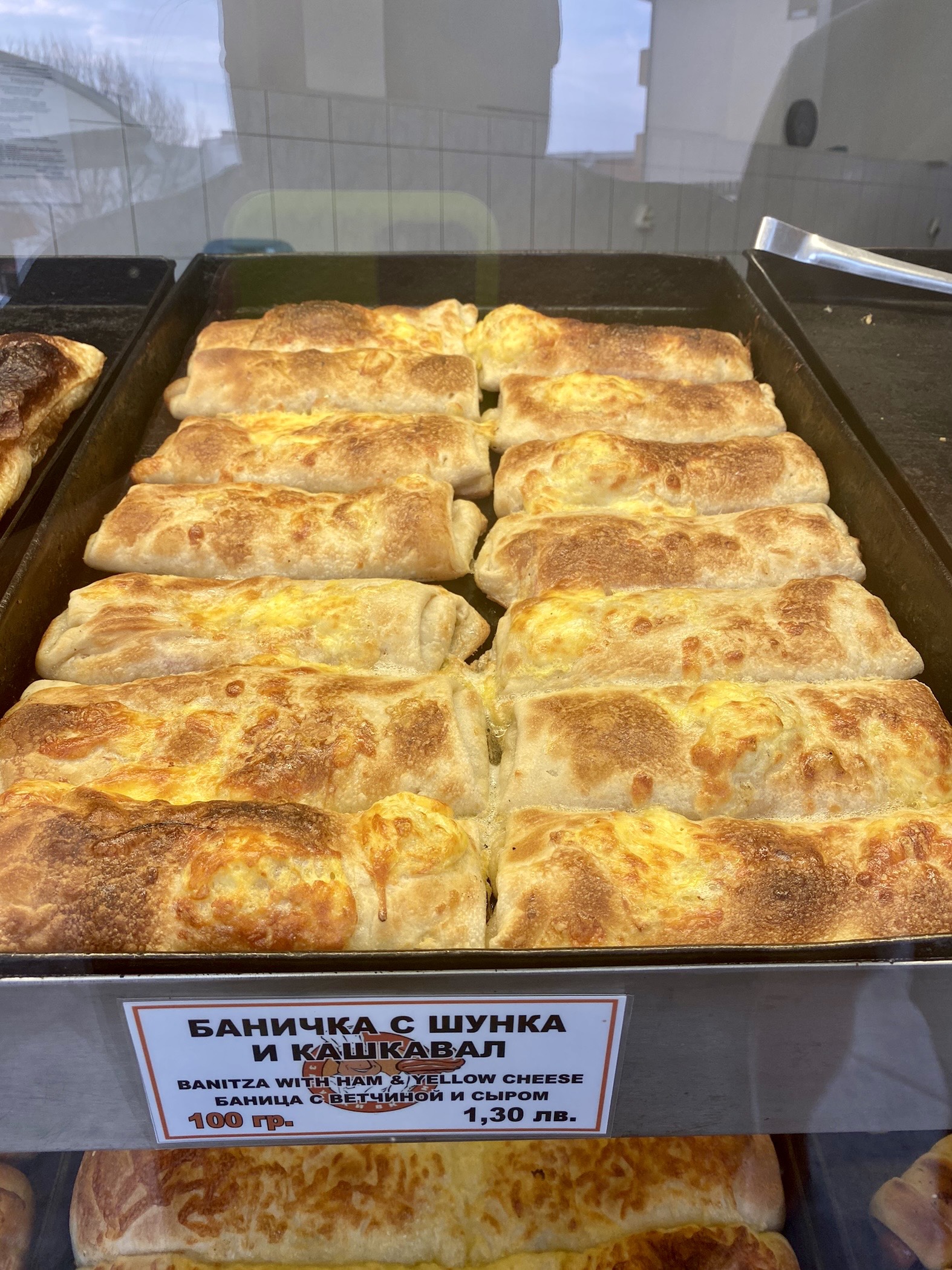
The bakeries often also serve pizza, or breakfast items resembling pizza. Bakeries offer ketchup and mayonnaise for topping the baked goods. Interestingly, this also seemed to be an option for pizza restaurants: a drizzling of ketchup over a slice was not uncommon.
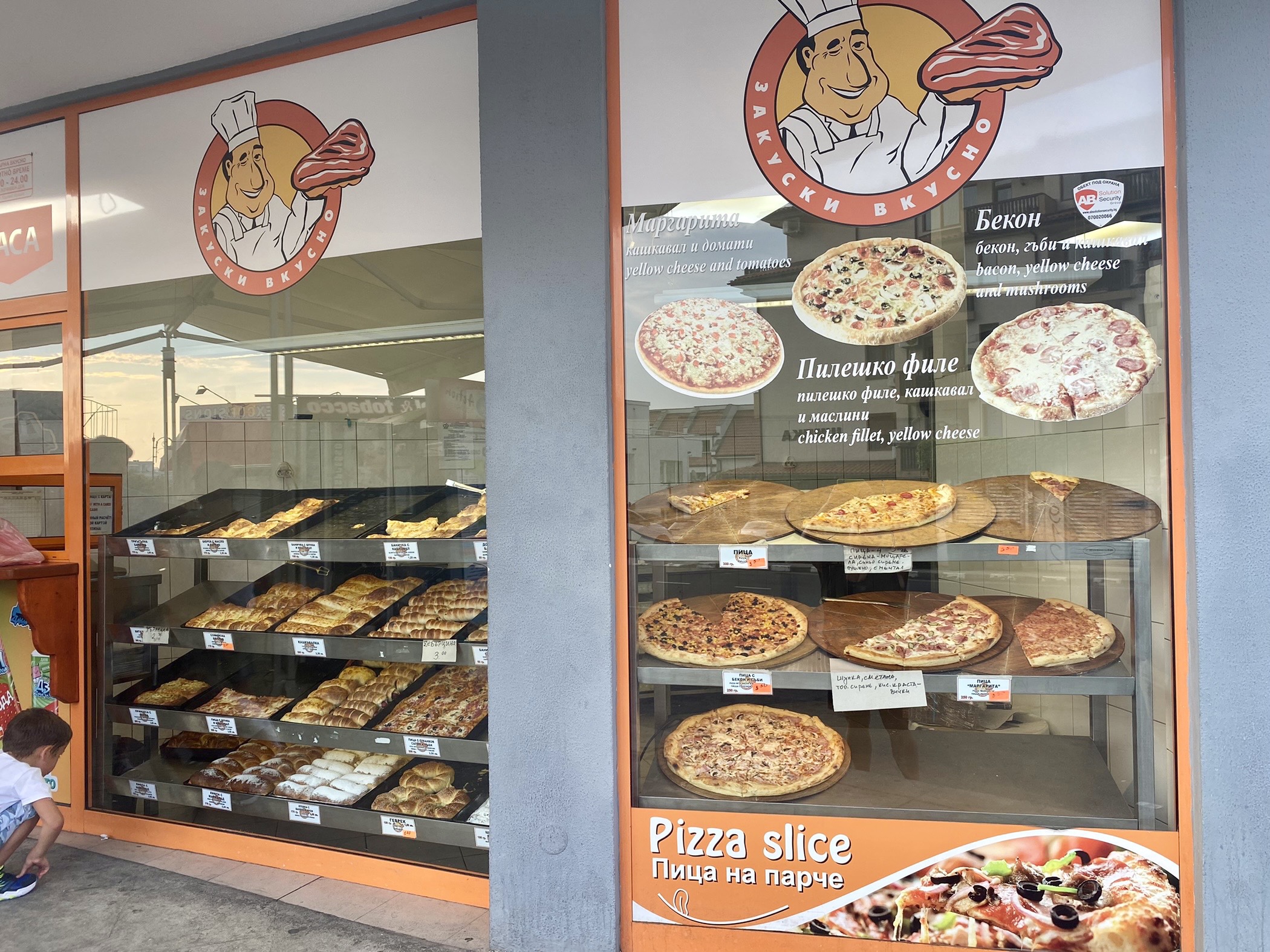
Coffee
Bulgaria has more coffee vending machines than Seattle has Starbucks. They are outside bakeries and convenience stores, at bus stops, the beach, and pretty much everywhere else. Even on run-down industrial blocks, there will usually be a stand-alone coffee machine.
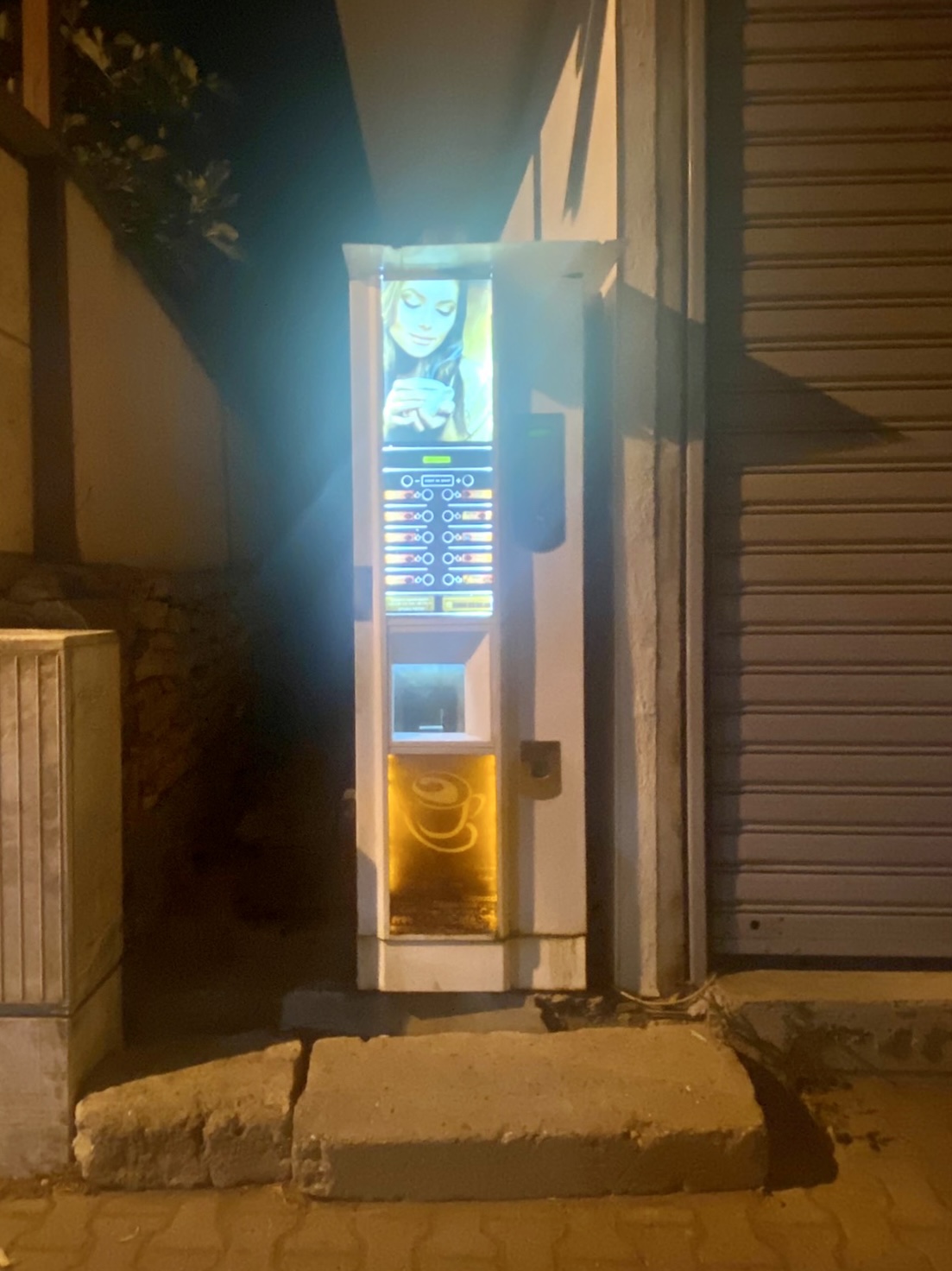
The product is certainly is not a hand-tamped espresso, but they often use Lavazza or other pods and the quality is at the level of a home pod-system, at a market price of around 35 cents USD. We have gotten very used to having these around, especially since our current apartment does not provide a coffee maker!
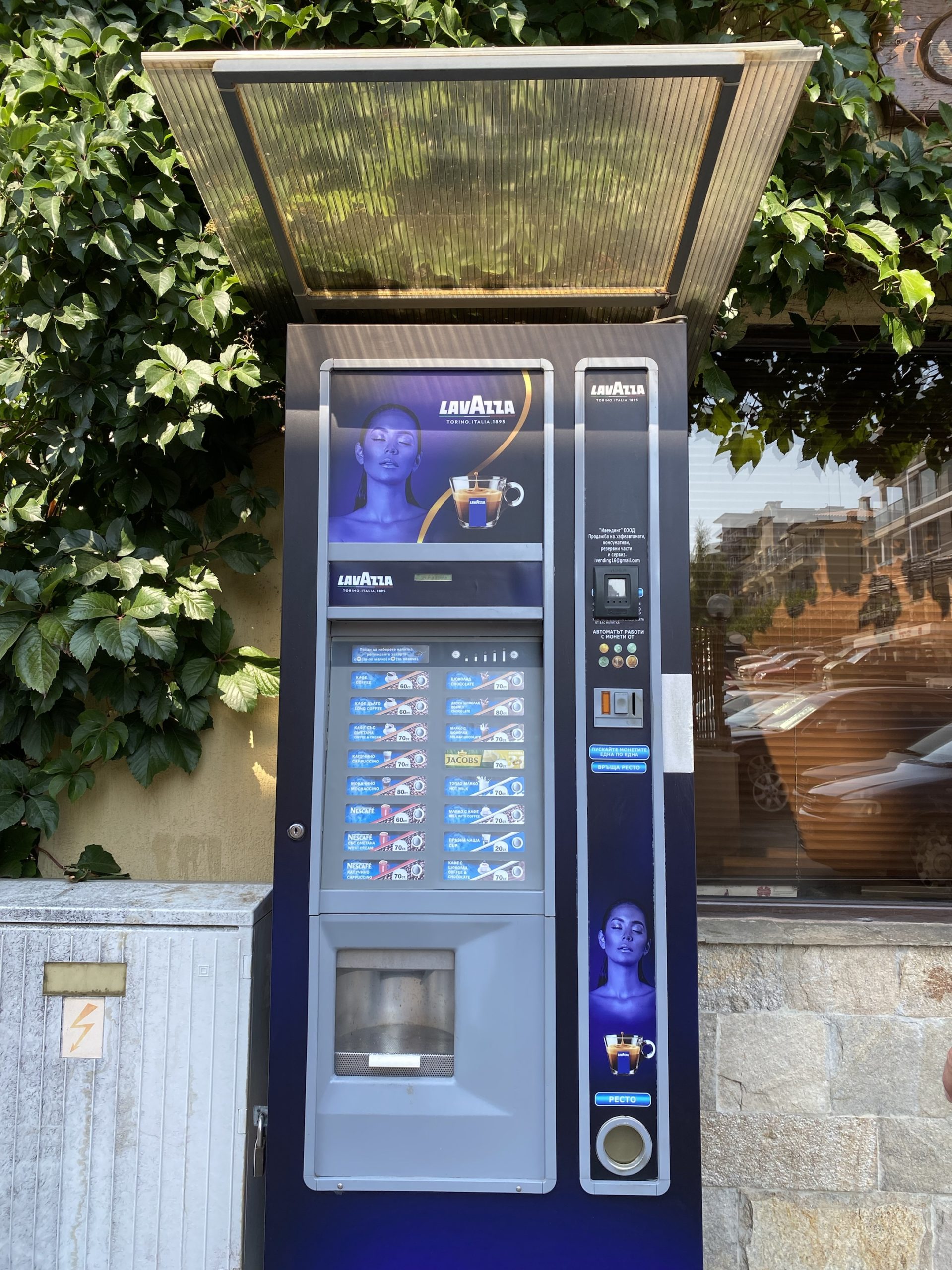
Fun places we’ve eaten
We have cooked several meals at home and eat out consistently. Most of our dining out meals have been at the restaurant at the Watermill complex in Sveti Vlas, which we believe translated to the Watermill Tavern. It was great to have fresh food by the pool in the afternoon, plus they had two-for-one cocktails for happy hour!
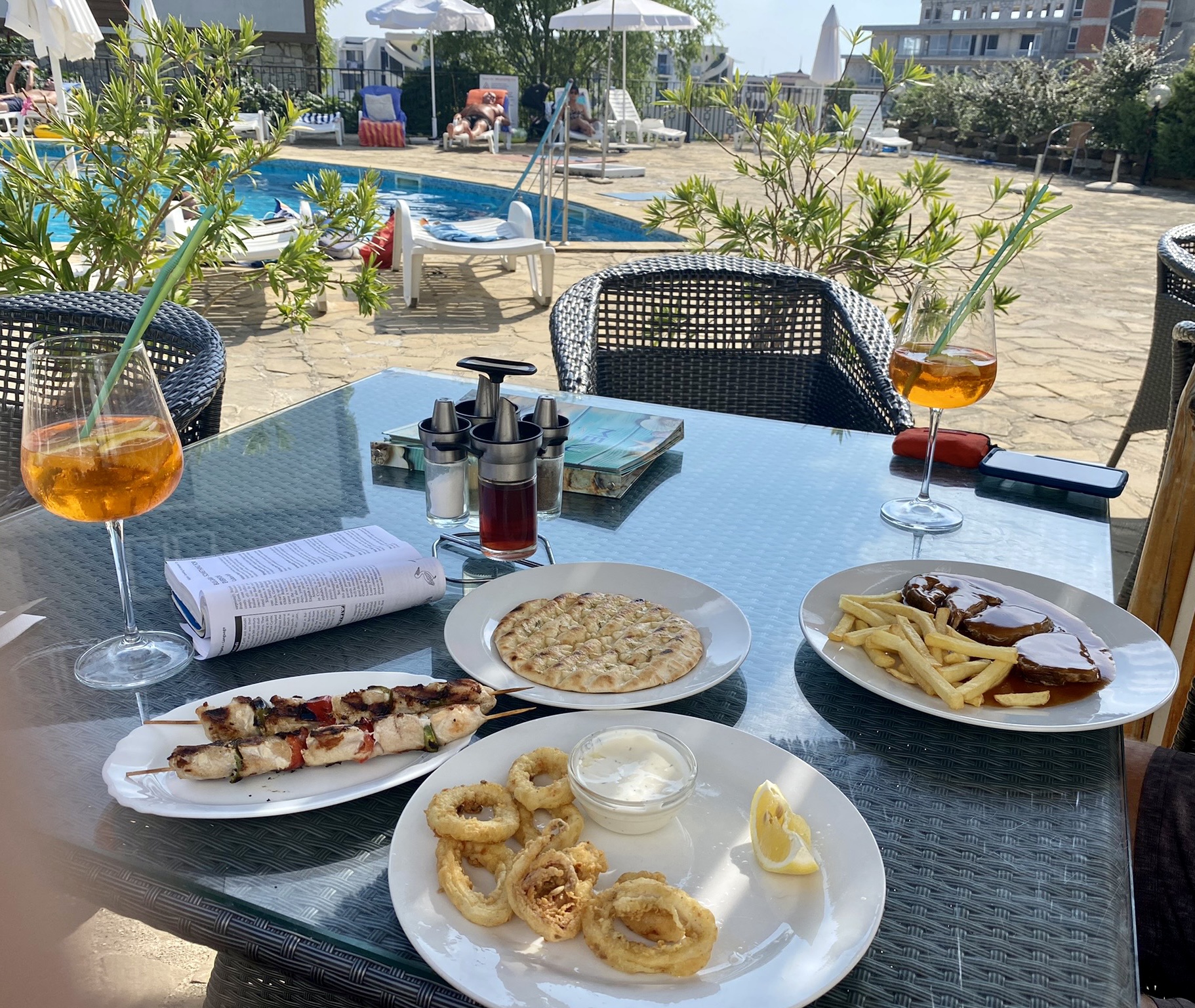
We splurged one night and enjoyed a meal at a Turkish restaurant in the trendy Sveti Vlas marina district. We shared several mezze plates and dips, lamb, and Turkish desserts. It was our most expensive meal so far which cost around $60 USD.
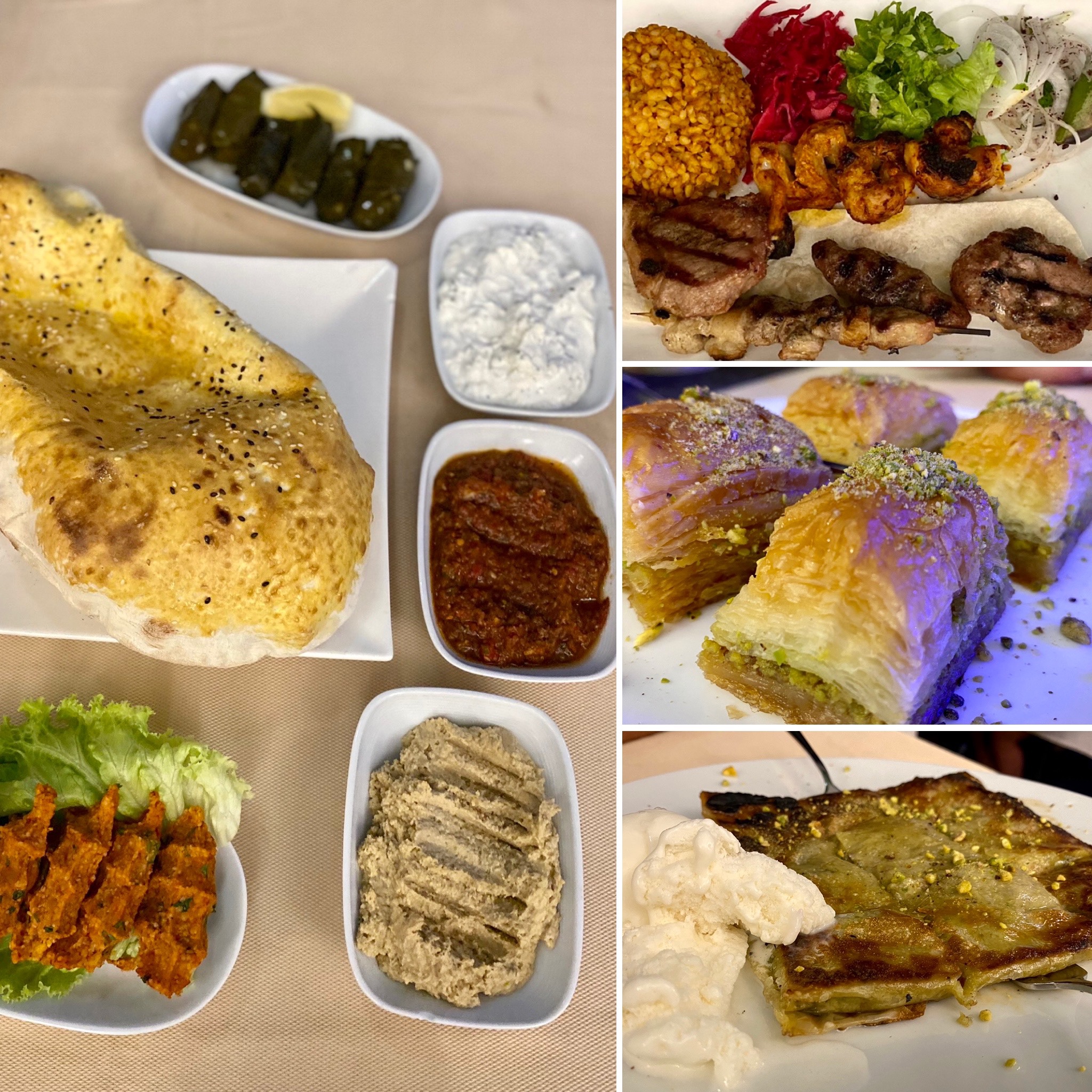
We had two meals at a Greek place located right on the beach. Slightly overpriced but nice ambience while sitting on the deck inches above the sand.
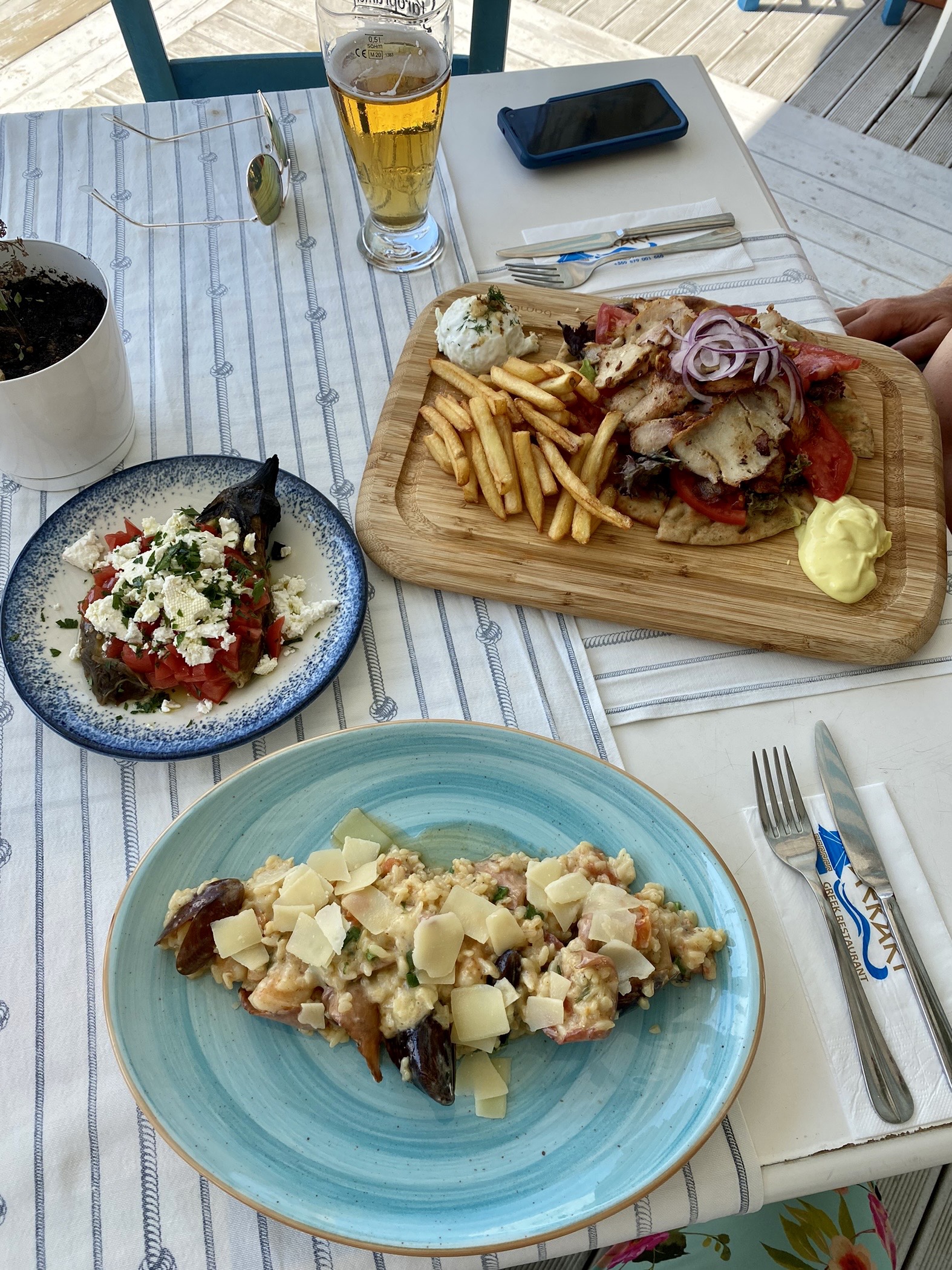
One of our favorite places to visit in Sveti Vlas was the Burger Saloon! A fully western establishment with a small fountain, swinging doors, country music blasting, and western movies playing on the tv. You could saddle right up to a sidewalk bar and people watch while sipping on a cold beverage. You could not beat the prices!
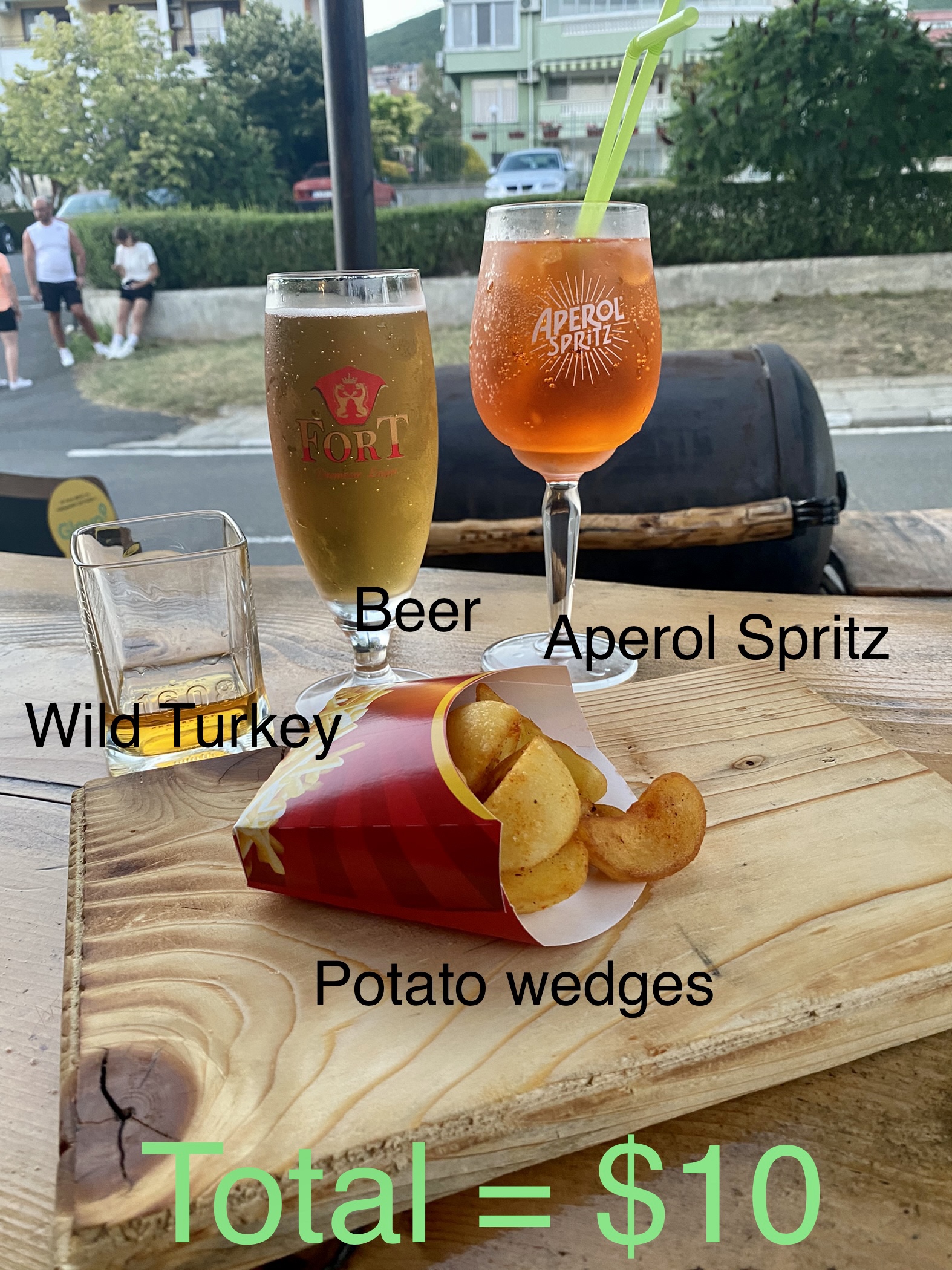
We came back when we were more hungry and ordered a burger. It was pretty tasty and we enjoyed the overall saloon atmosphere.
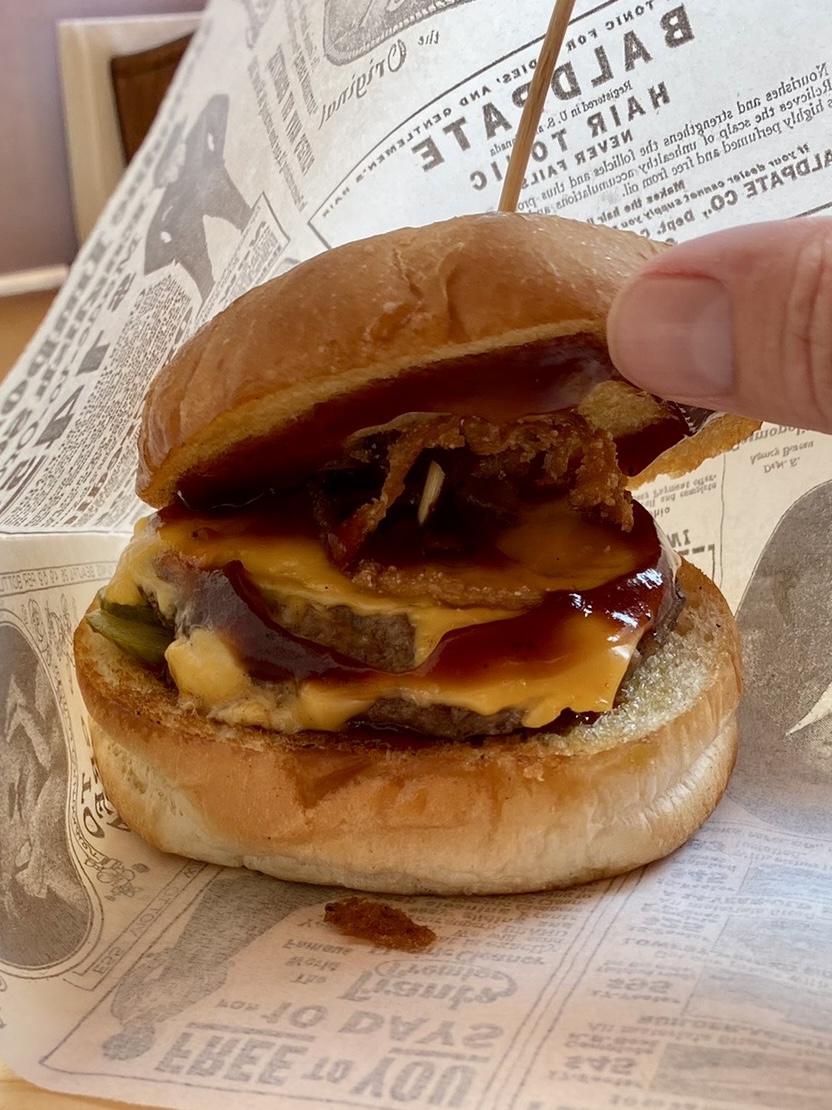
Common snacks and street food
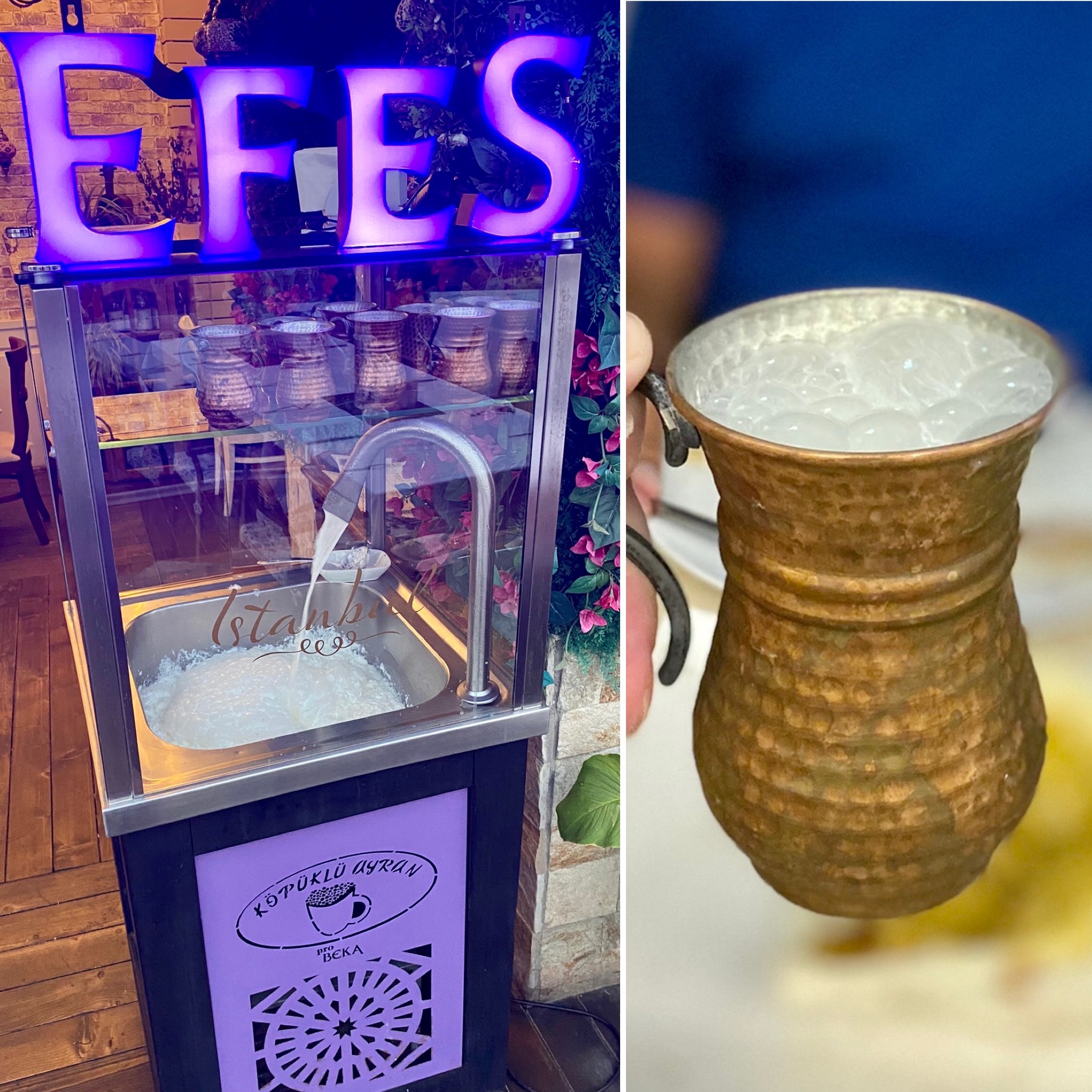
Drinking yogurt (Ayran): Salted yogurt diluted to the consistency of a beverage. Similar to lassi. Often drank for breakfast and sold at bakeries.
Corn: Hawkers roam the beach carrying hot corn on the cob, served simply with salt. Street vendors also have loose corn in a cup, served with butter, salt, and cheese. This was one of our favorites.
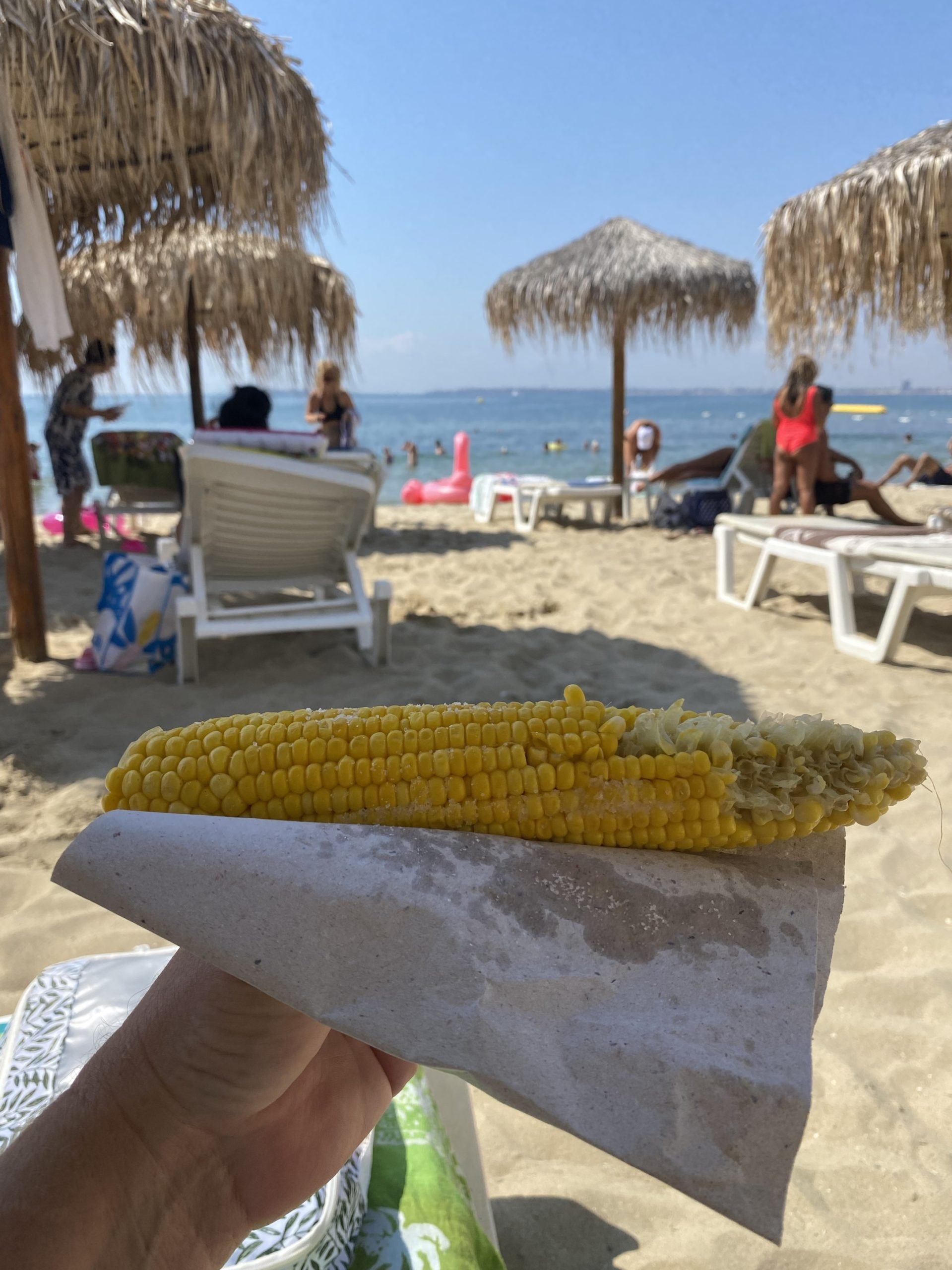
Fried fish: Sprats and other fried fish are common around the beach, along with french fries.
Fast food: Chicken doners are common, although gyro meat can also be found. Grilled burgers or hot dogs.
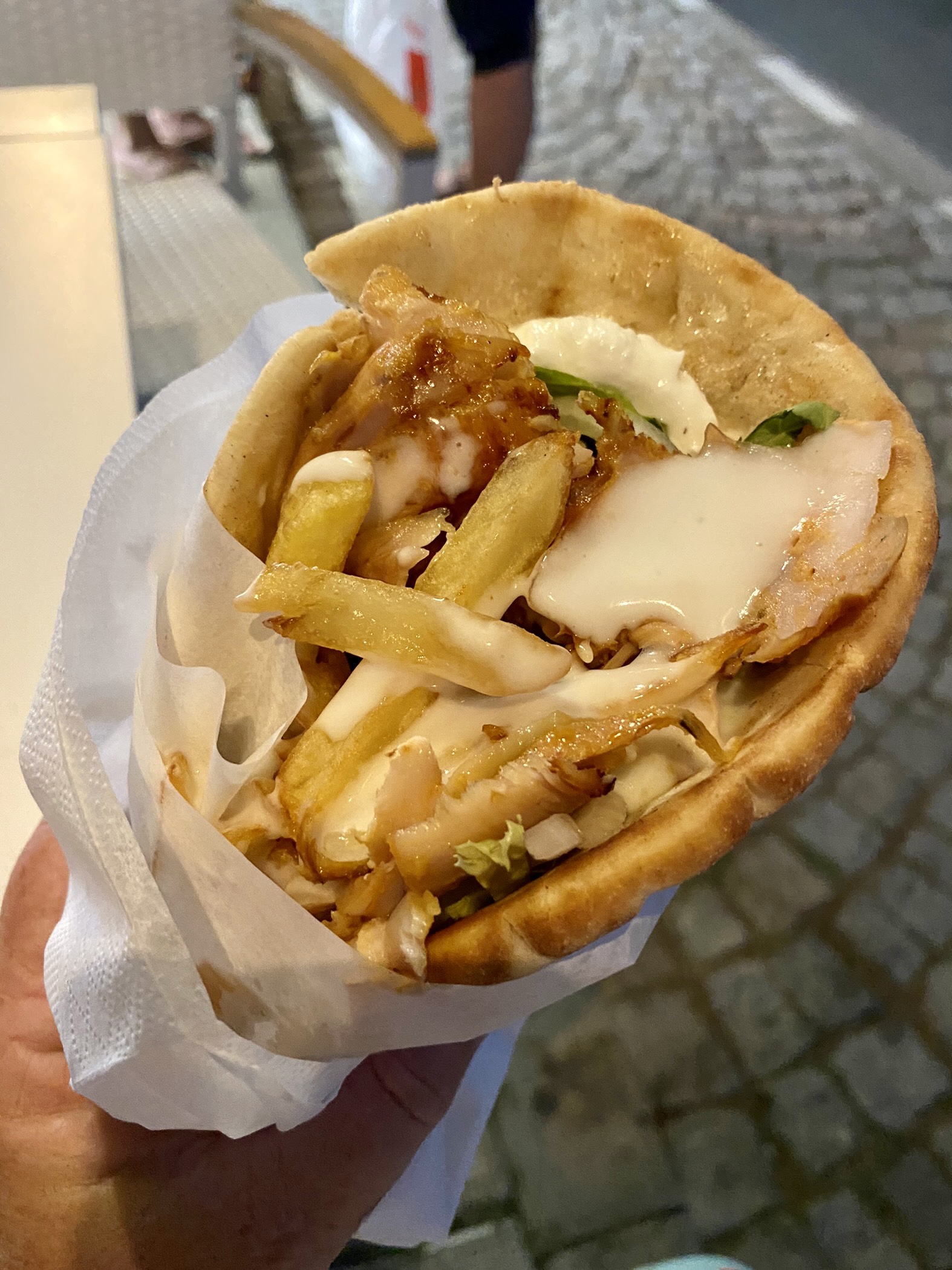
Dessert: Especially around the beach, stands offer bubble waffles (like an inside-out waffle) and ice cream/gelato.
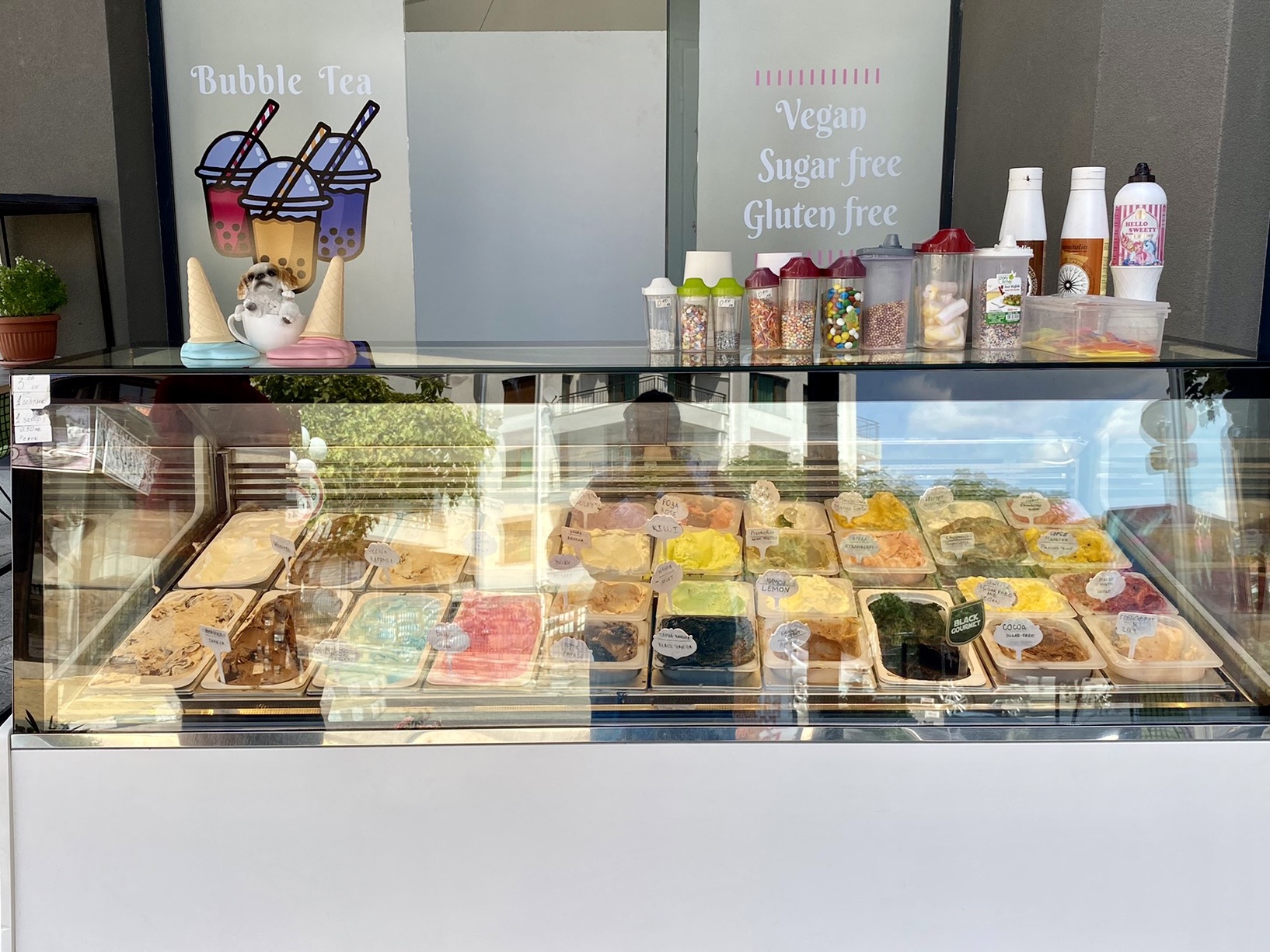
Size of meals
All the menus in Bulgaria provide the size of the dish. With limited language or understanding this has been really helpful for us to know how big or small a dish may be.
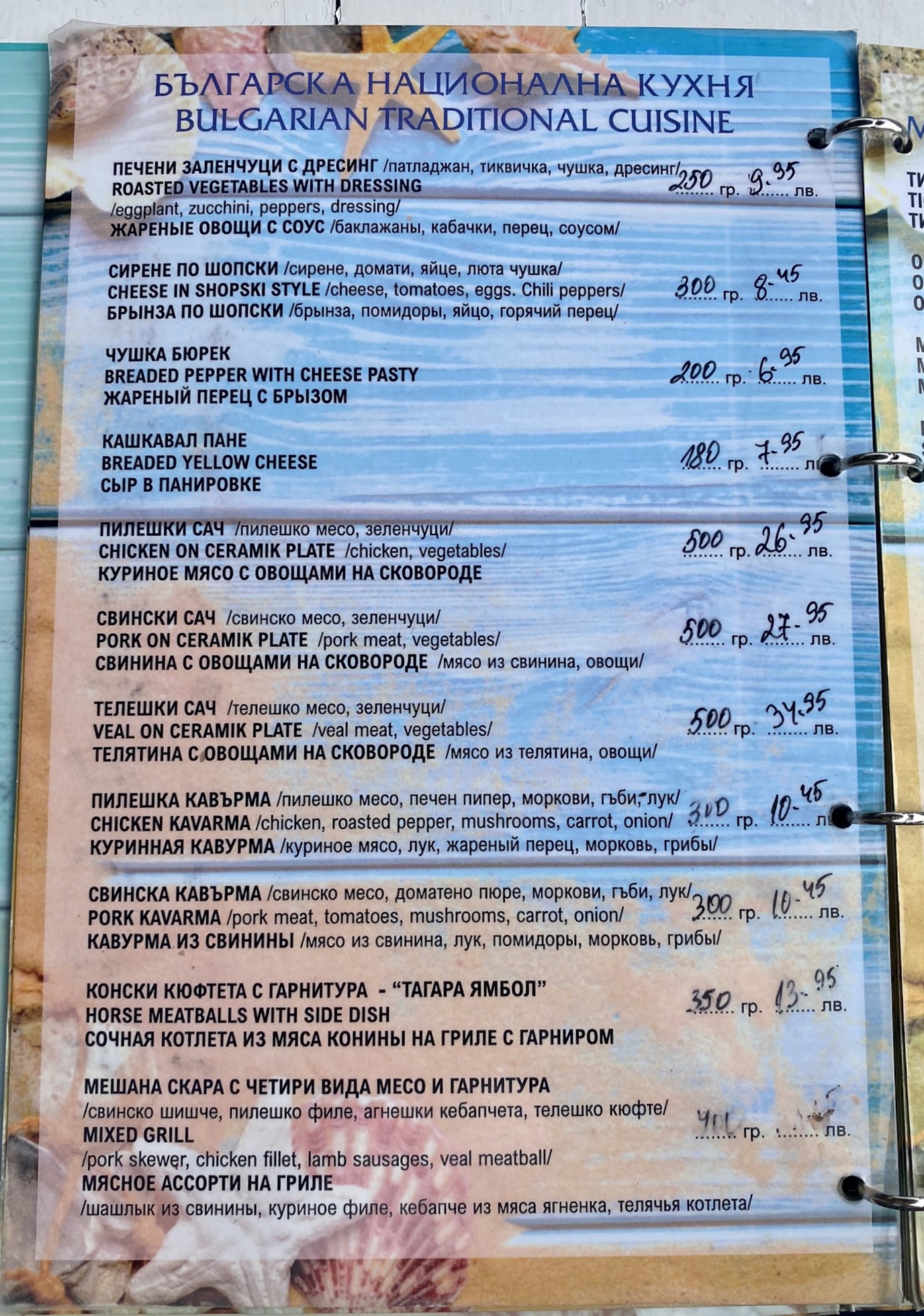
The traditional cuisine is fairly meat and cheese focused and we think vegetarians/vegans would have a difficult time here.
We have a few weeks remaining in Bulgaria, and will keep eating our way around the various cities. It has been an adventure to try as many new dishes as we can, especially when the translations have left something to the imagination. We are not tired of the broad menus, but we are also hoping to find more-focused restaurants, especially in Sofia or Plovdiv.
The food culture in Bulgaria seems to be very strong and the Food Explora in me is her for it. I enjoyed reading about the different bulgarian dishes; your pictures are sharp. The Mish Mash dish reminds me of Jamaican Ackee and codfish. Thanks for sharing your experiences.
Thanks! Glad you enjoyed reading this post. All the food has been great here. We will keep an eye out for the Jamaican Ackee when we are back in that part of the world!